The Prostitution Information Center (PIC) has been in existence since 1994 and provides information about sex work from the perspective of sex workers to anyone who is interested.
Archives: Organisaties
Mainline room
Mainline stands up for the rights and health of people who use drugs. Mainline focuses primarily on people who, related to drug use, experience problems in different areas of life and are therefore (threatened to) find themselves on the margins of society and/or people who run (considerable) health risks due to substance use.
House of Hiv – House of Mainline
Mainline was founded in 1990 by three young men who wanted to stop the Aids epidemic among IV drug users. The often unhygienic way people in that group were injecting drugs put them at extra risk. While Aids itself had been receiving more attention in society in the 1980s, this group of drug users was left to fend for themselves. They had to deal with withdrawal symptoms, life on the streets and their deteriorating health due to their drug use. Today, we know that IV drug users are twenty-nine times more likely to contract HIV than the average person.
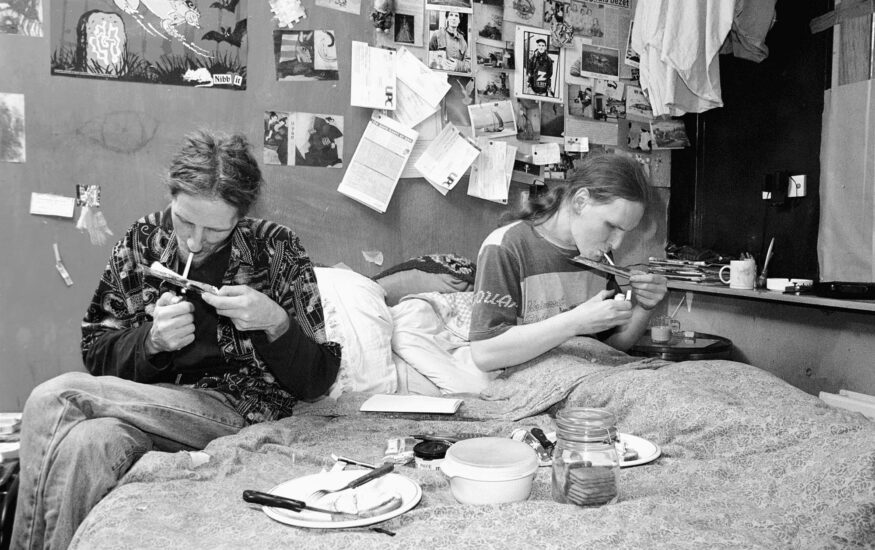
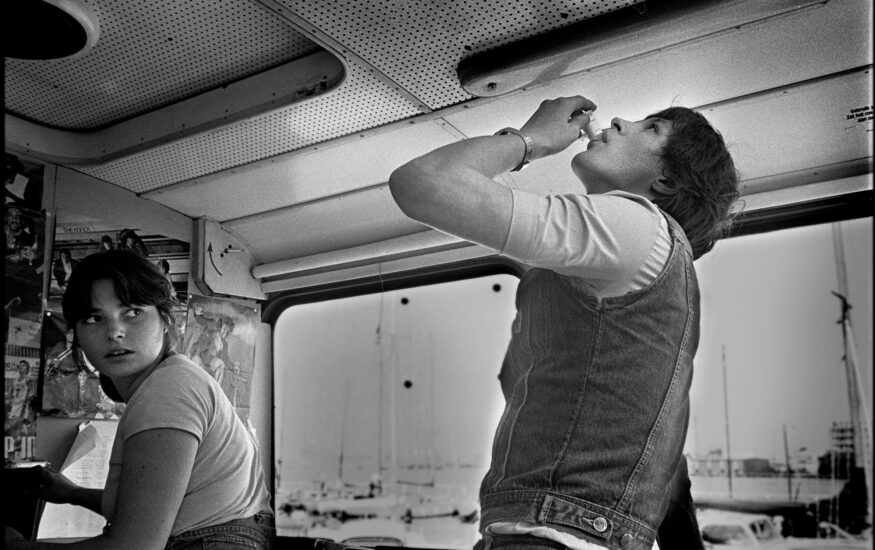
Mainline’s founders recognised the need and decided to create a unique magazine with information on drugs and health. The magazine, with texts written in the language of the street, quickly became a hit among users. Thanks to support from the Municipality of Amsterdam and later also from the national government, the magazine was distributed nationwide in places where marginalised users hung out: alleys, parks, methadone-dispensing rooms and streetwalking zones.
Mainline’s outreach workers and editors maintained good contacts with HIV clinicians, psychiatrists and drug users, so that they could inform users directly about the latest developments in HIV medication. The harm-reduction method – for decades a pillar of drug policy in the Netherlands aimed at reducing (health) damage caused by drug use – proved to be a very cost-effective way to reduce HIV within this vulnerable group. But perhaps more importantly, it also proved to be the best way to strengthen the overall health and position of drug users in the Netherlands and even worldwide.

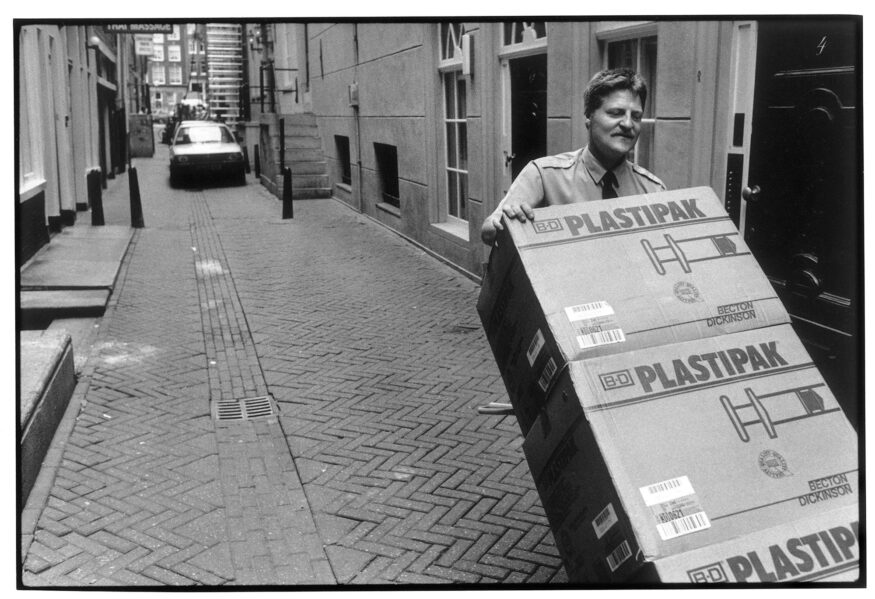
Photos of the exhibition:
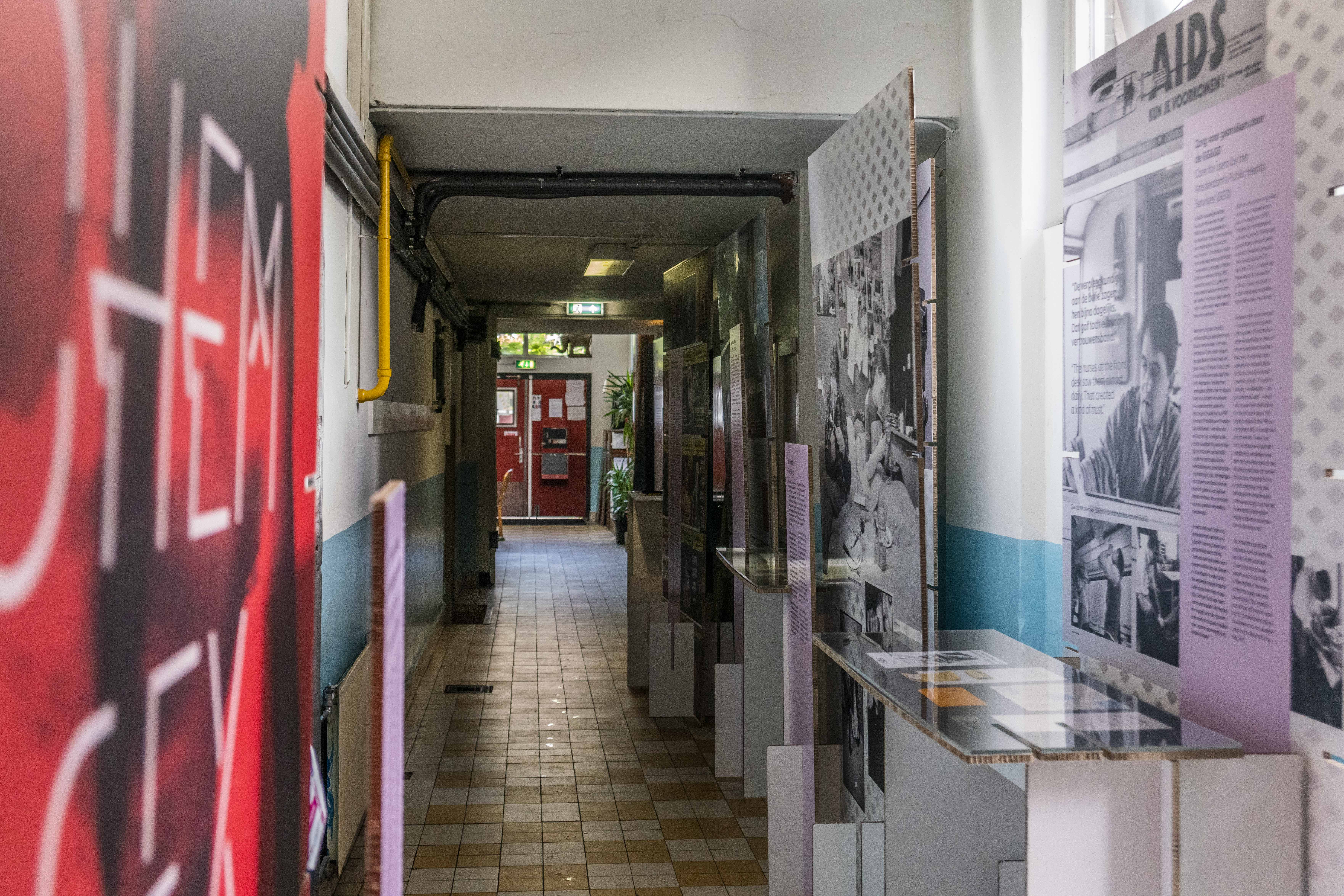
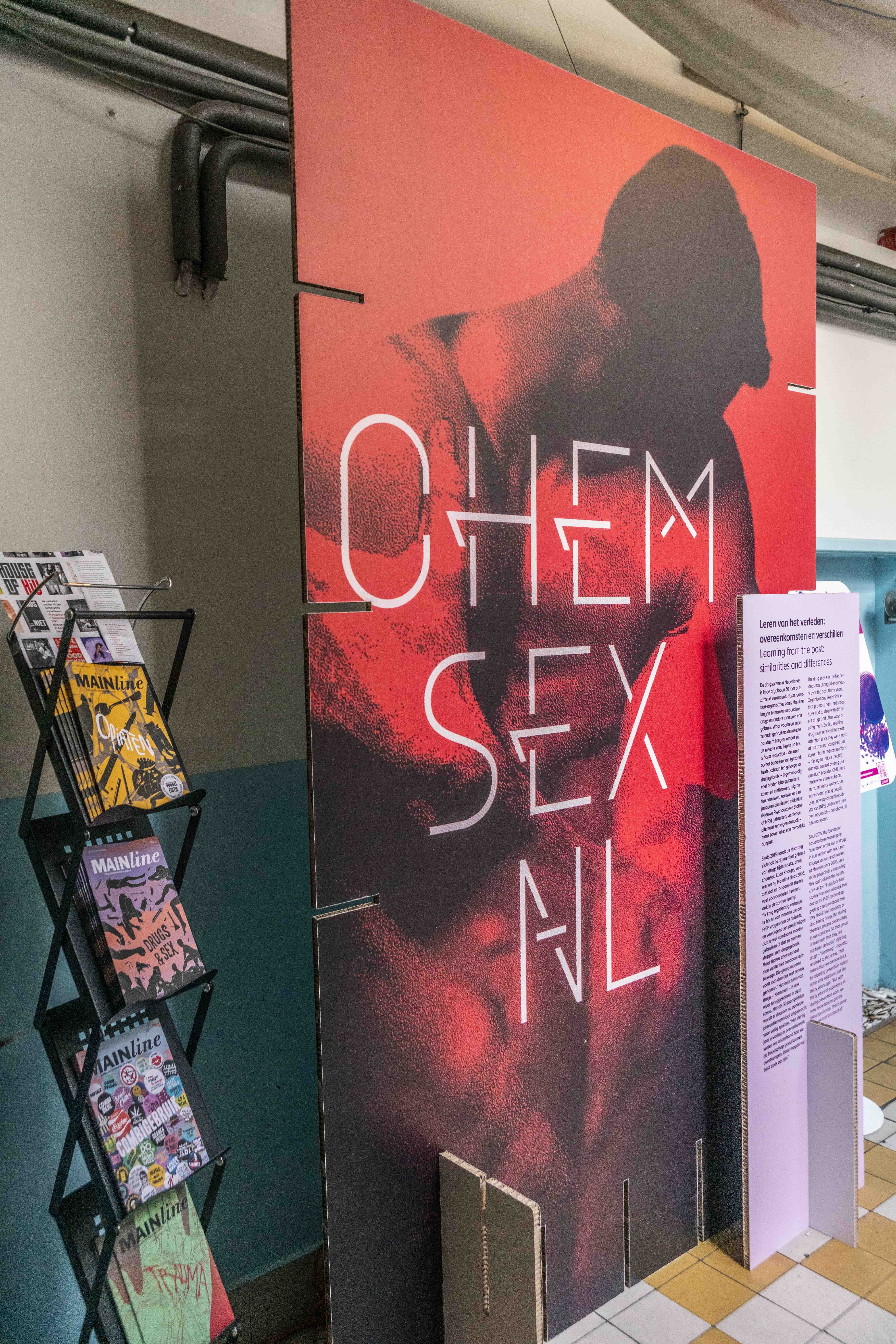

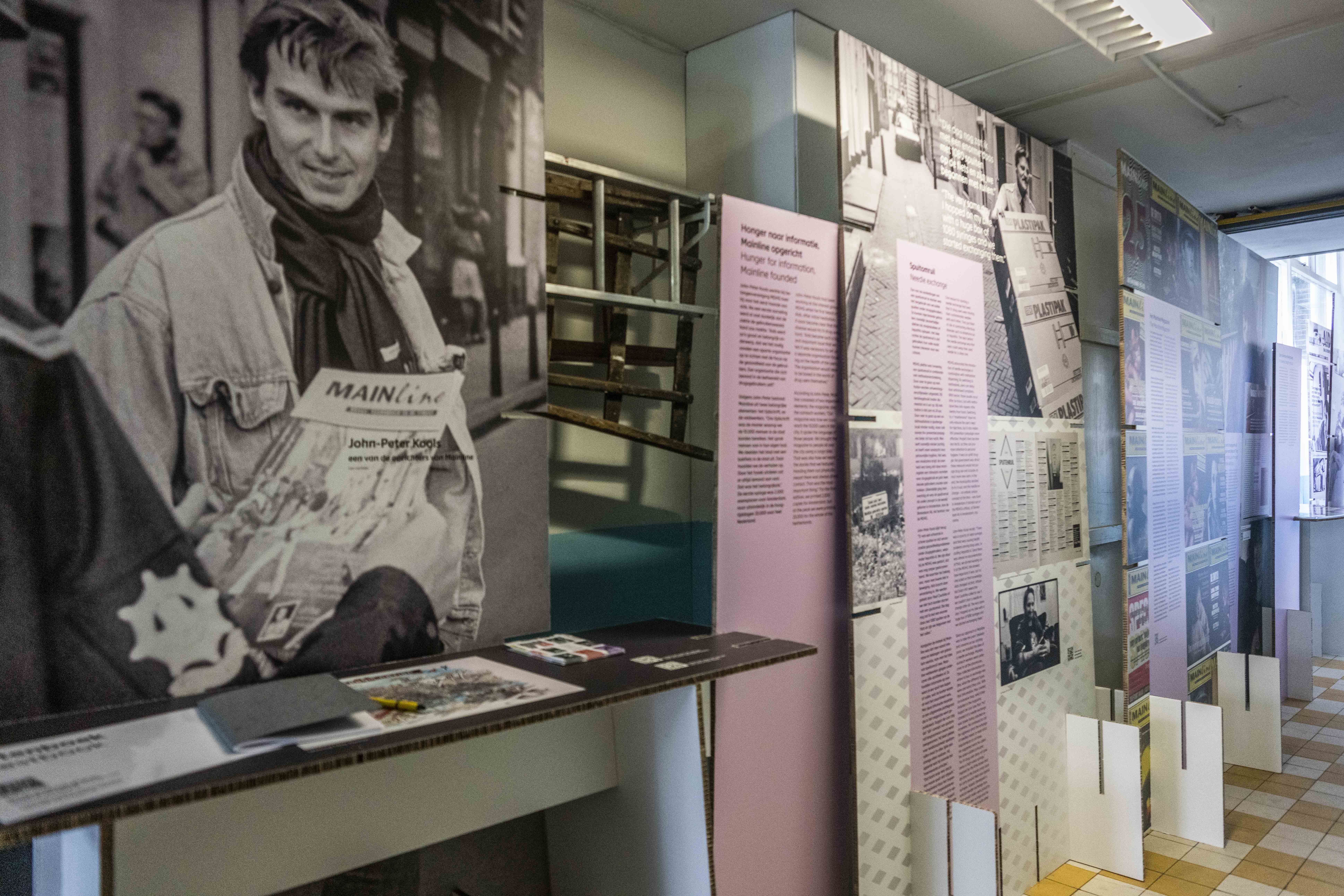
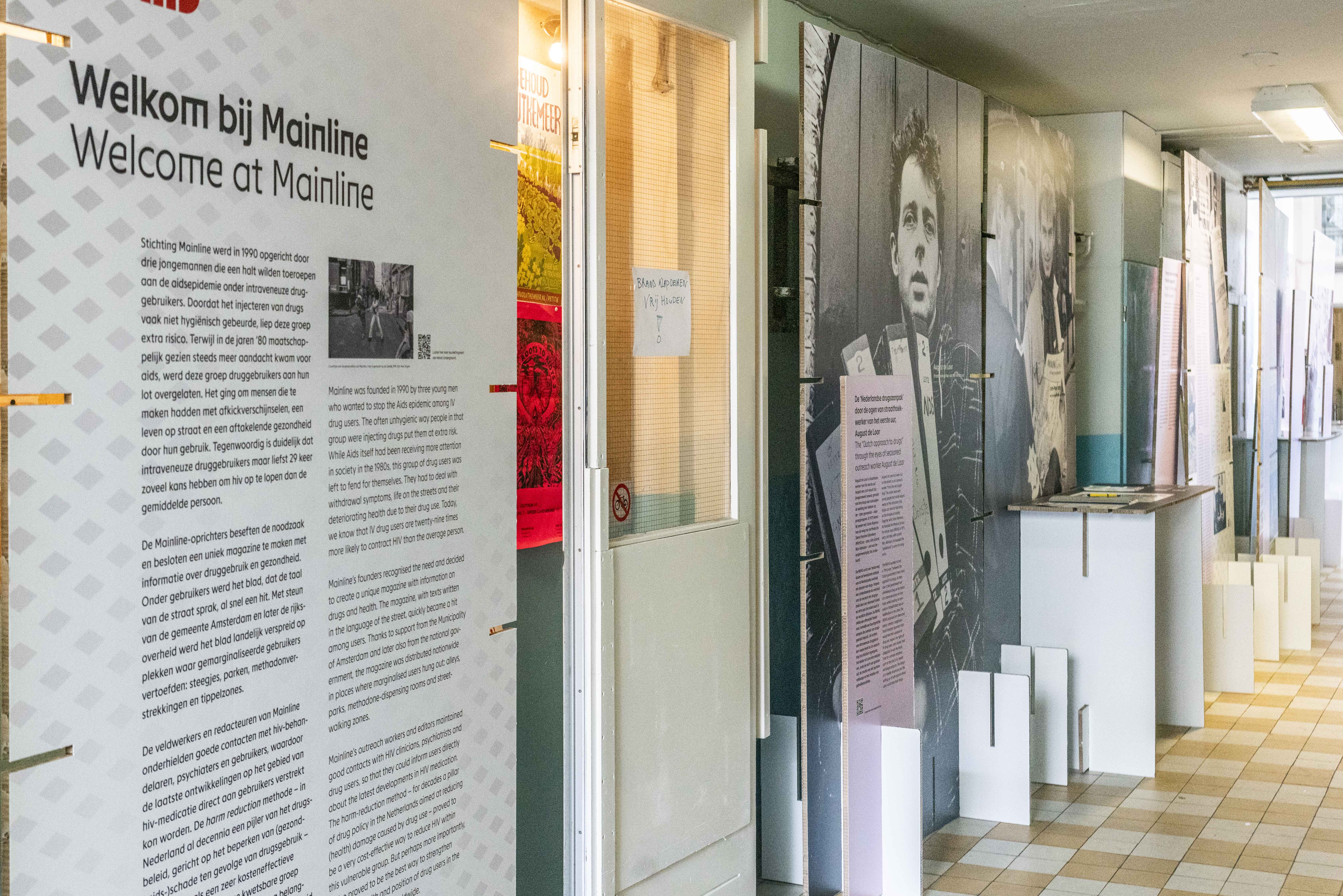
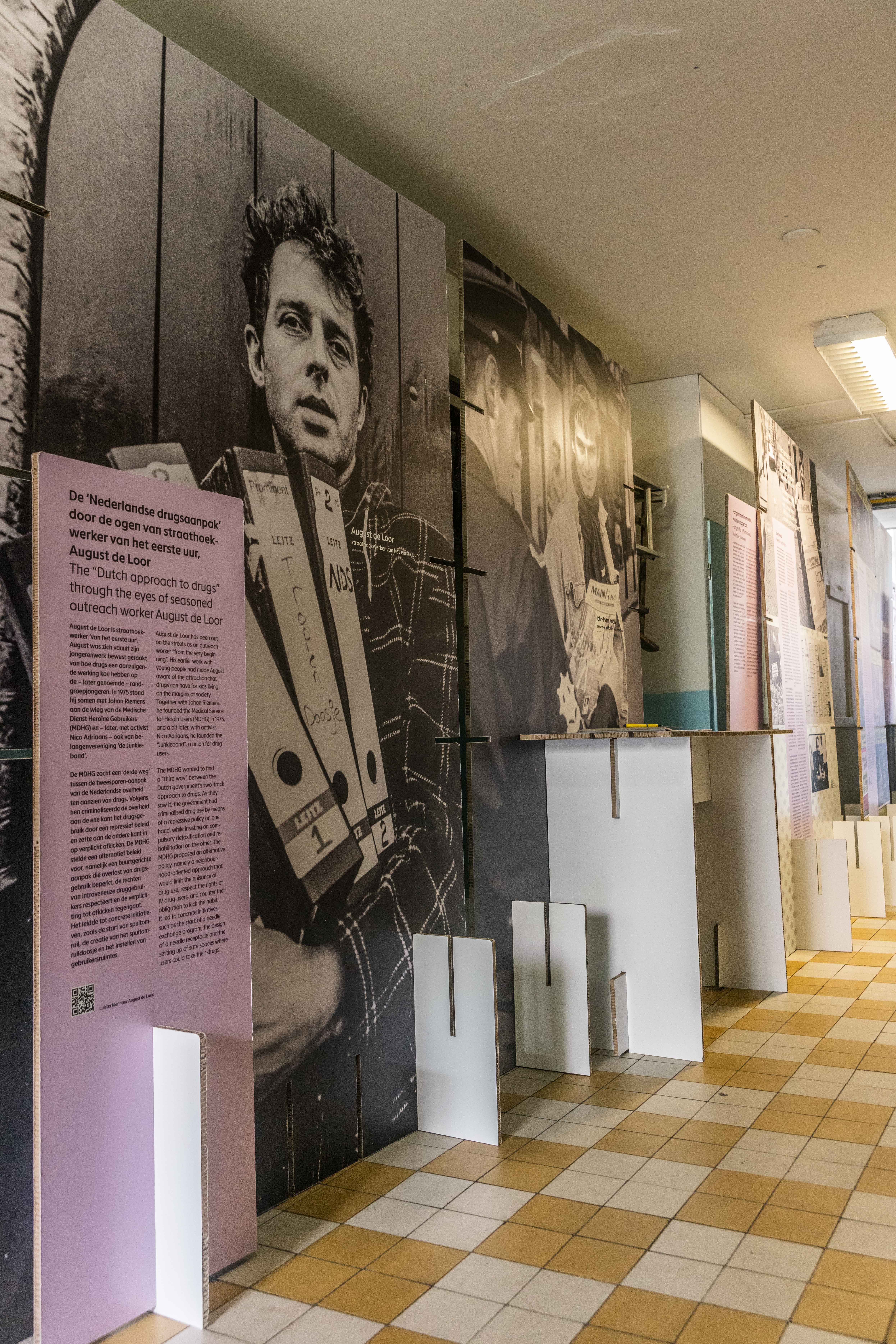
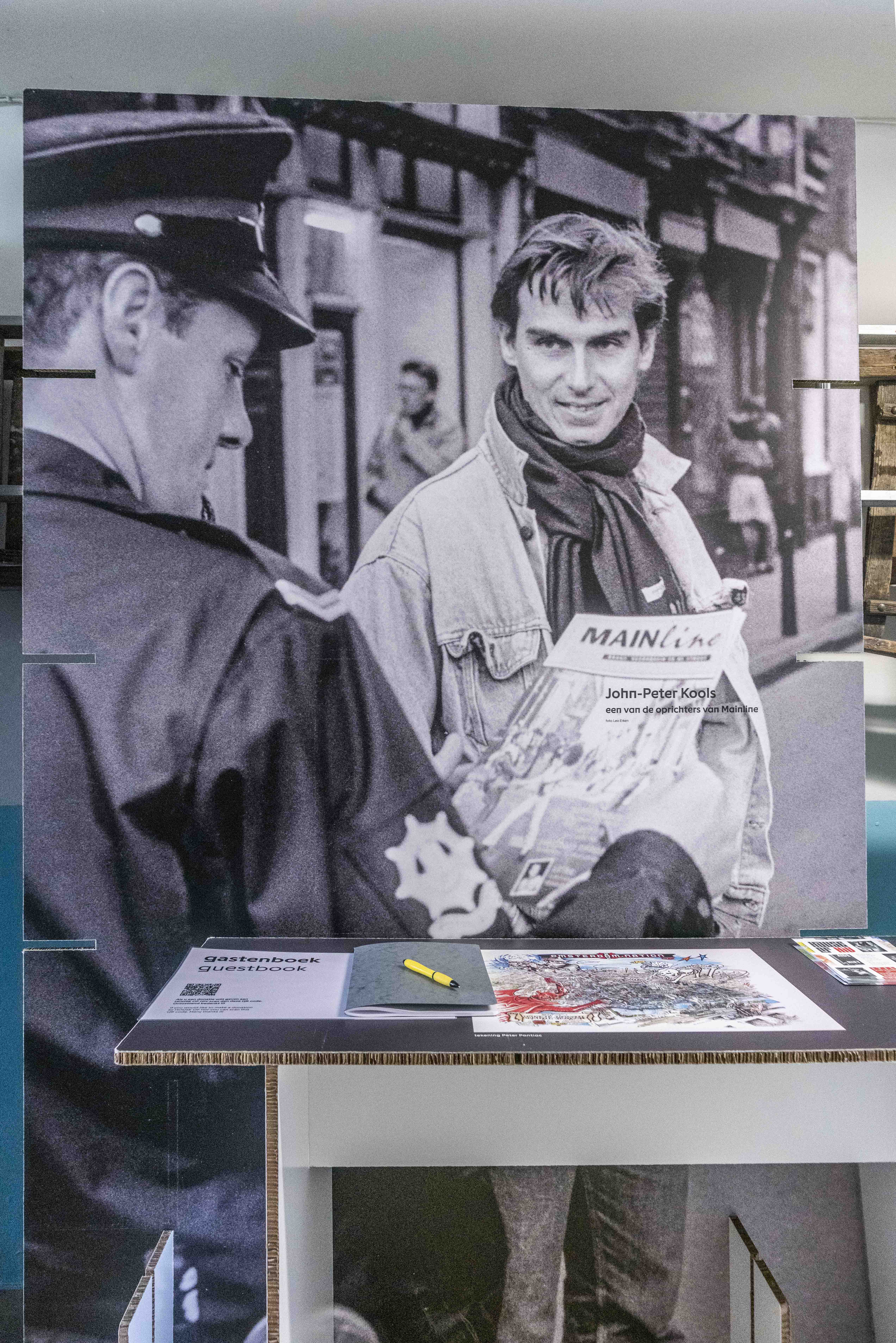
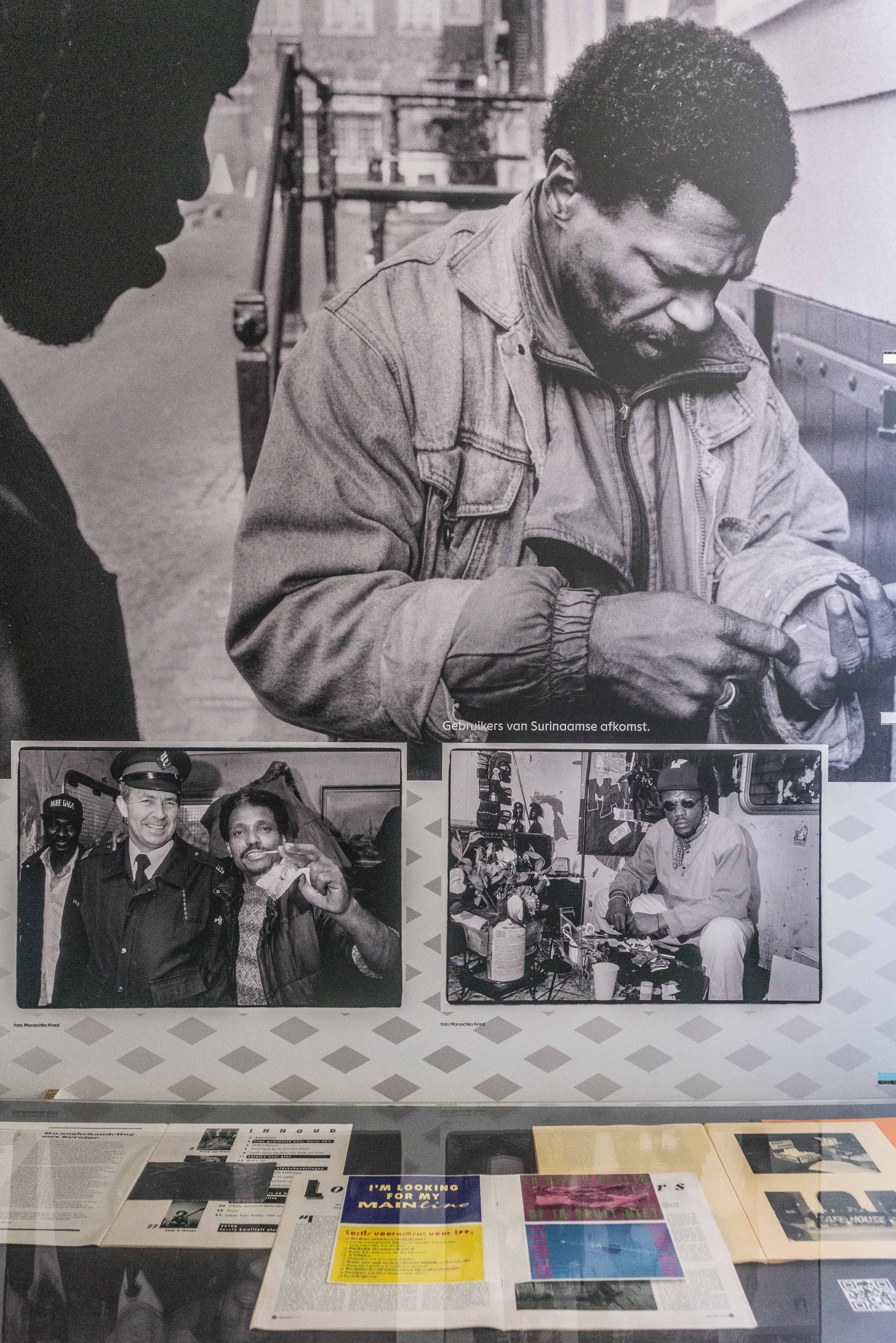

Mainline
Mainline’s mission is to promote health and improve the social position of people who use drugs.
hello gorgeous room
hello gorgeous is a small community organization that moves mountains in the fight against HIV stigma.
House of Hiv – House of hello gorgeous
The room of hello gorgeous was displayed in the old squatters complex Tetterode. The queer disco De Trut is part of Tetterode and was the place where Act Up! Amsterdam was founded in 1990.
From the start of the epidemic in our country, the then called gay movement managed to influence AIDS policy, and education about HIV and AIDS was done for gay men by gay men. Gay health organizations packaged the safe sex message in leaflets, workshops, campaigns and even in a porn video. This resulted in high-profile campaigns in Amsterdam’s nightlife in the 1990s.
However, the fact that gays had a lot of influence was no guarantee that everything would turn out well. The activism of Act Up! Amsterdam was needed to ensure that the rights of people living with HIV and AIDS were paramount.
Our room was called Night Sweat and tells how gay men shaped their own education and honors the activism of Act Up! and the activists inspired by it.
Meet Eric and André, the founders of Act Up! Amsterdam, with Tanne, Martin, !Niet Slikken! the Safe Sex Guerrilla, Elias of Secret Garden and other activists.
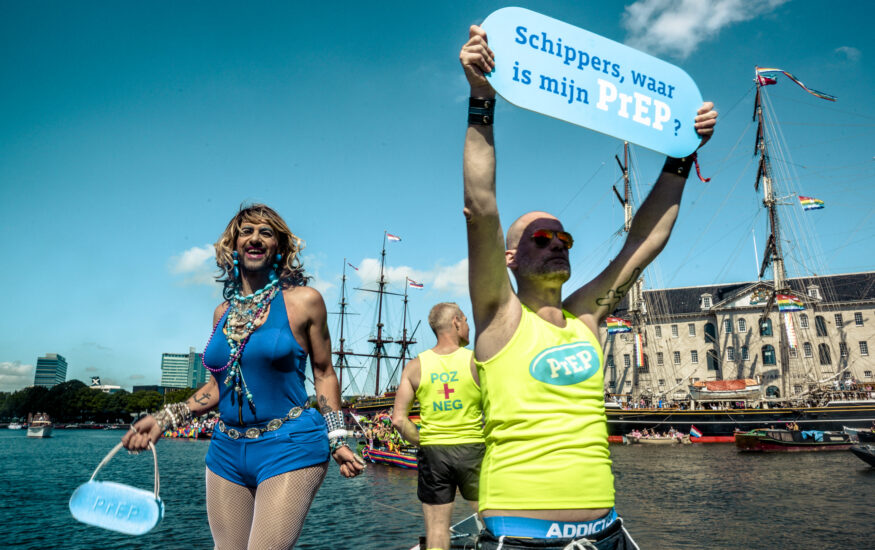
Photos of the exhibition:
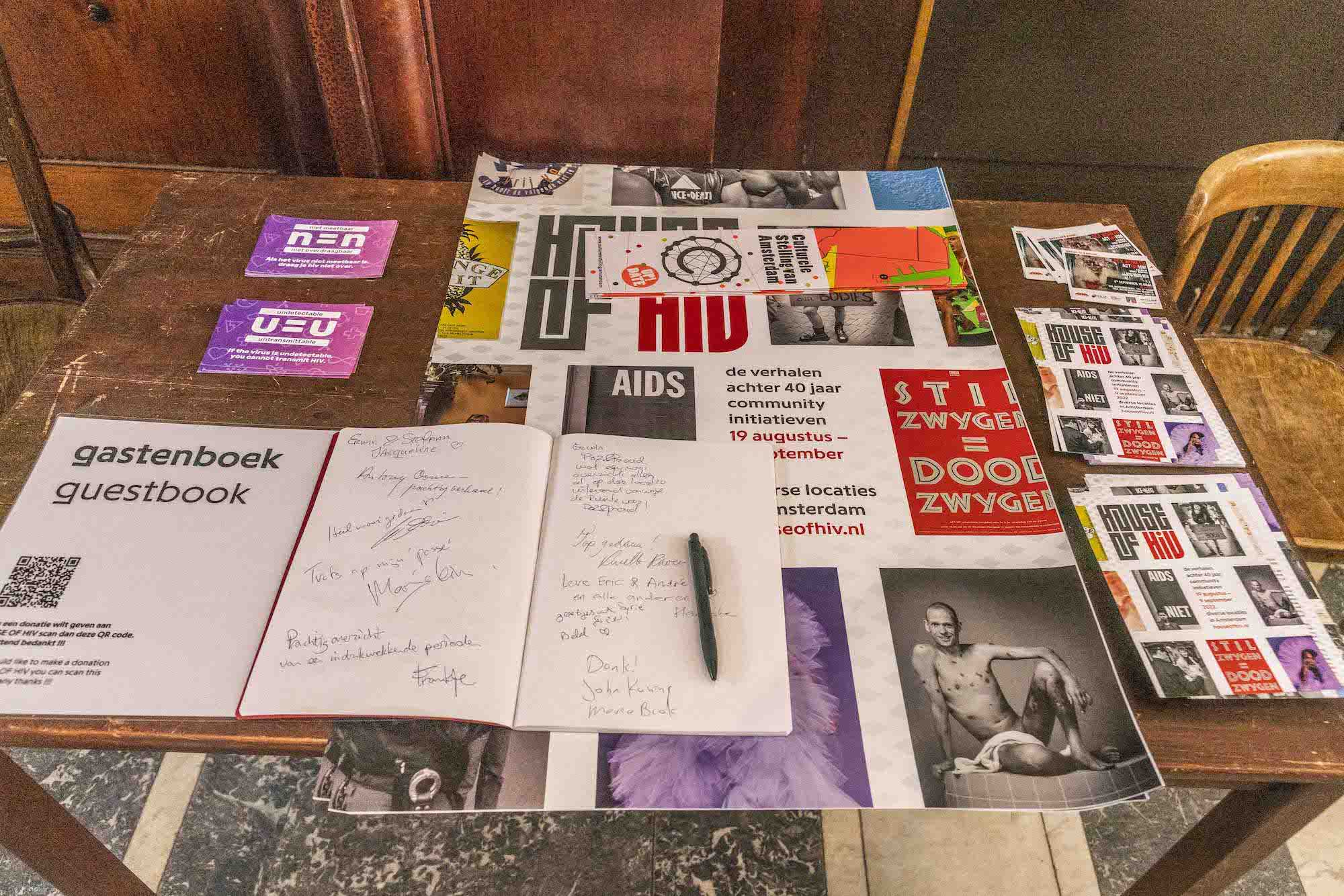
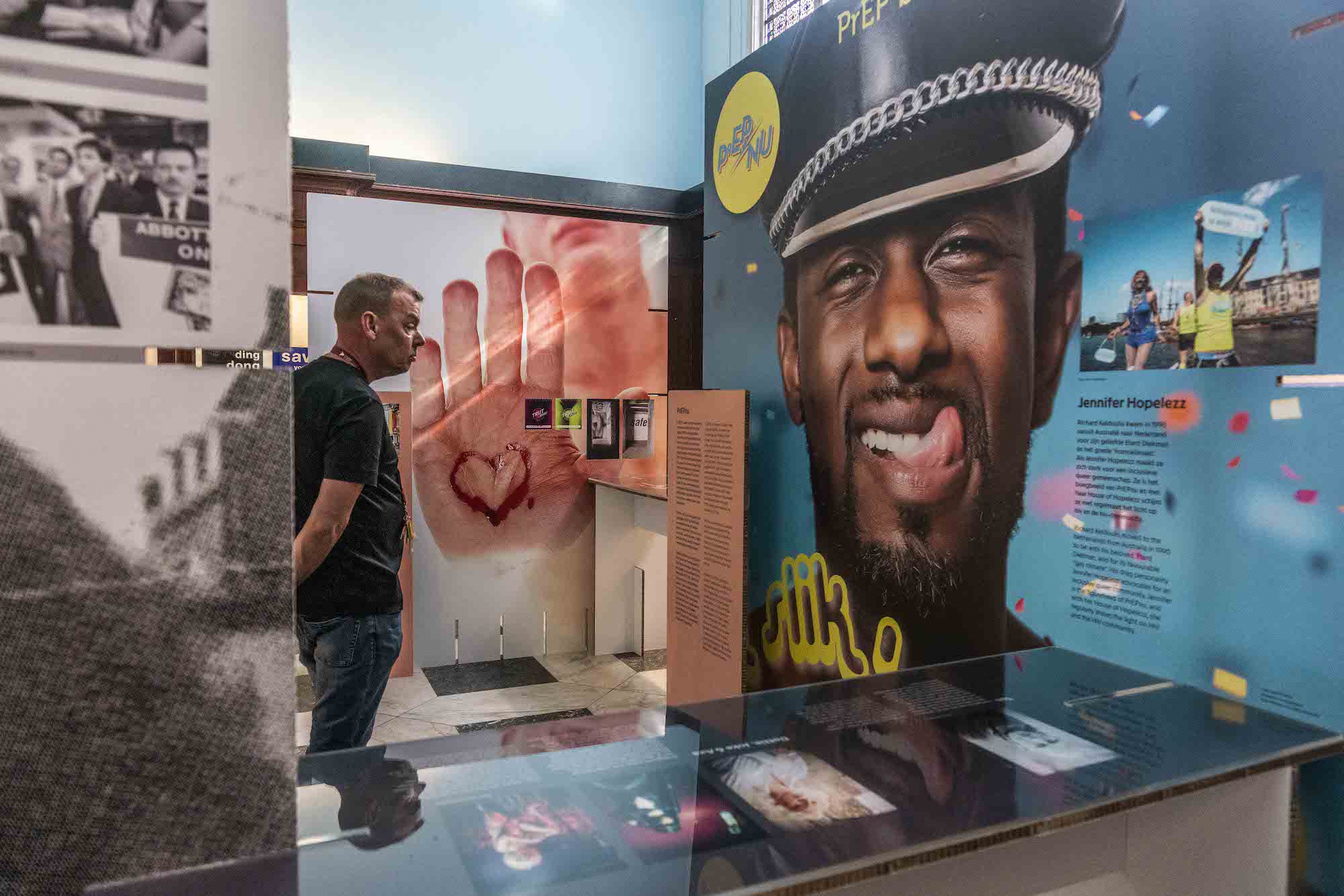
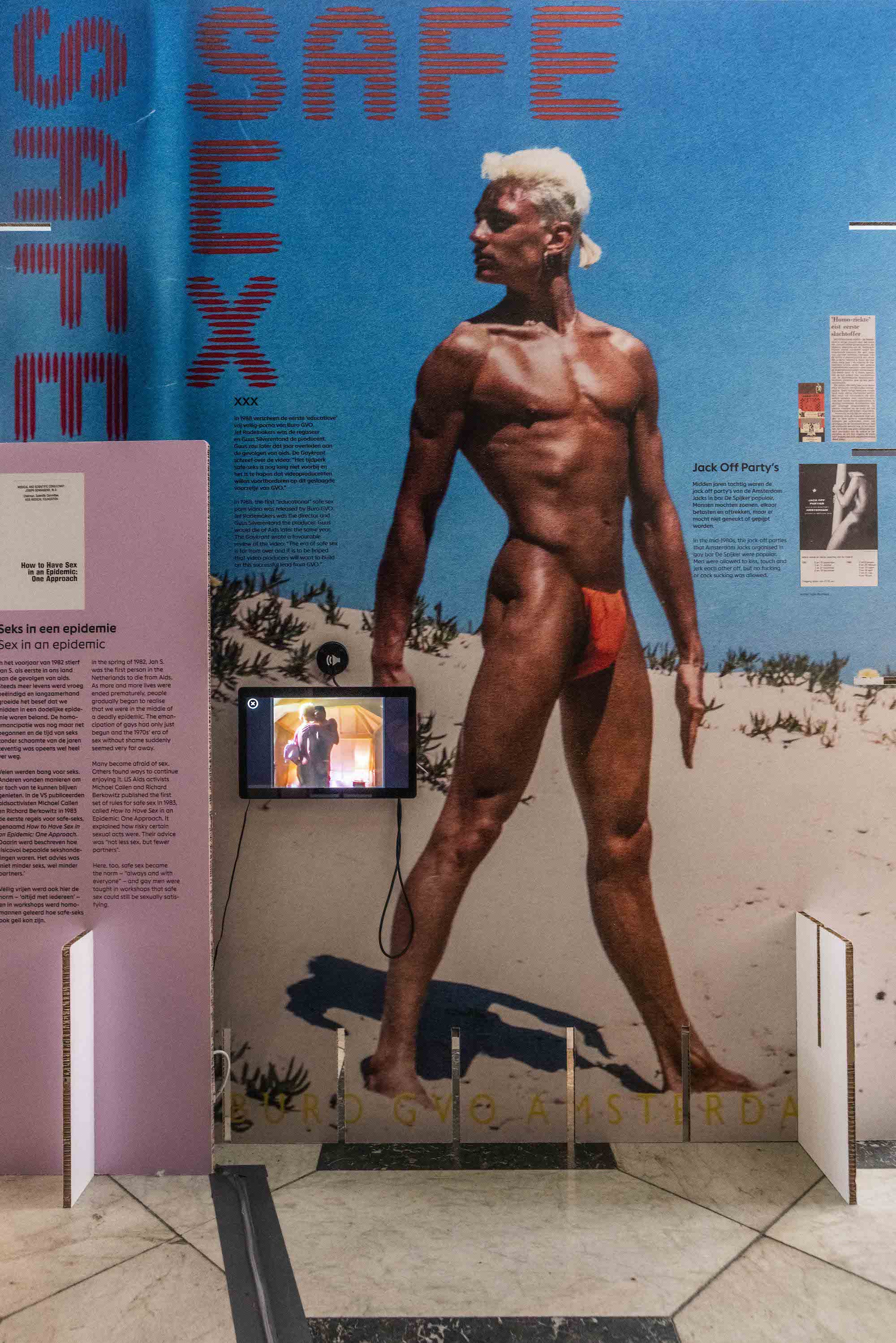
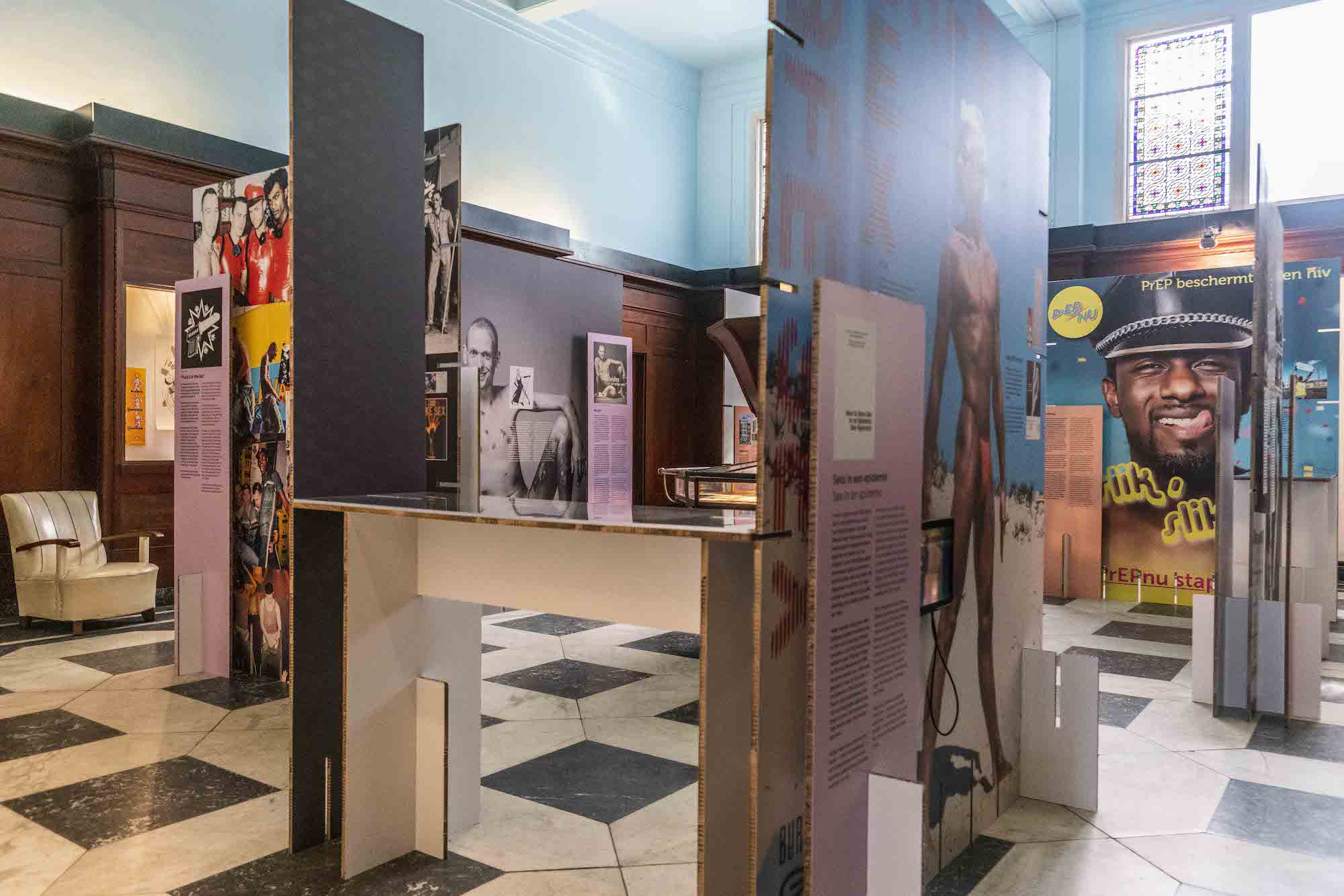
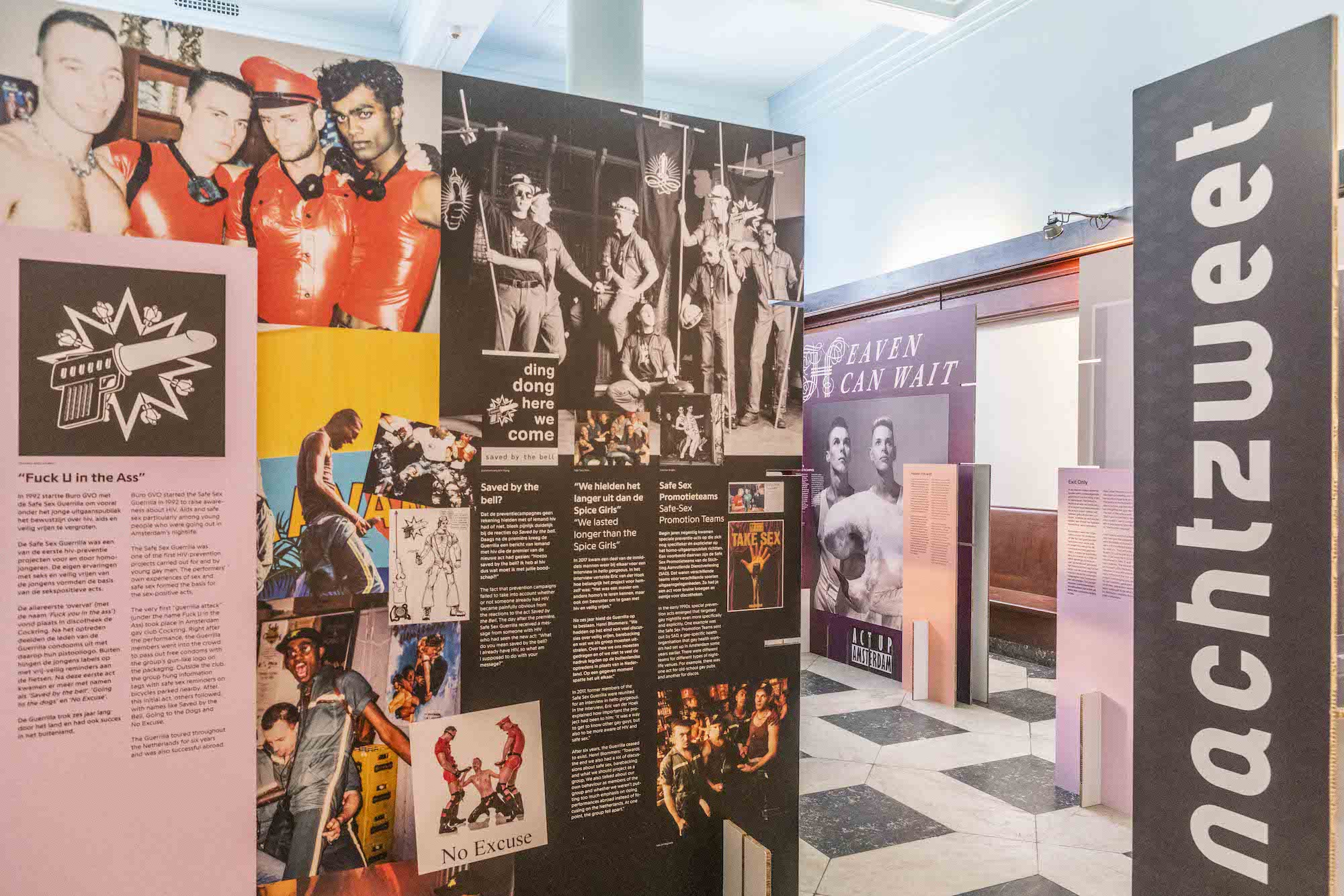


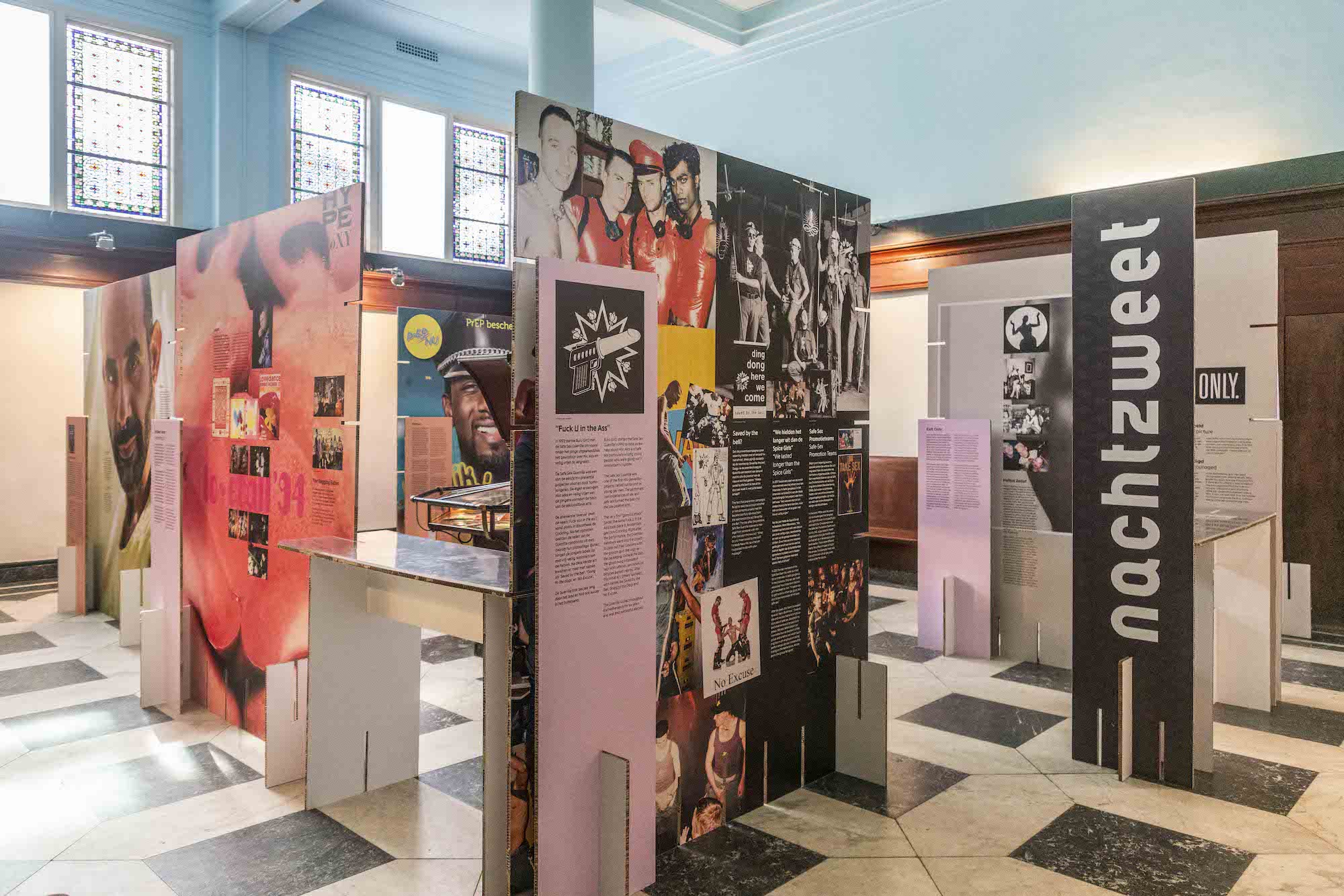
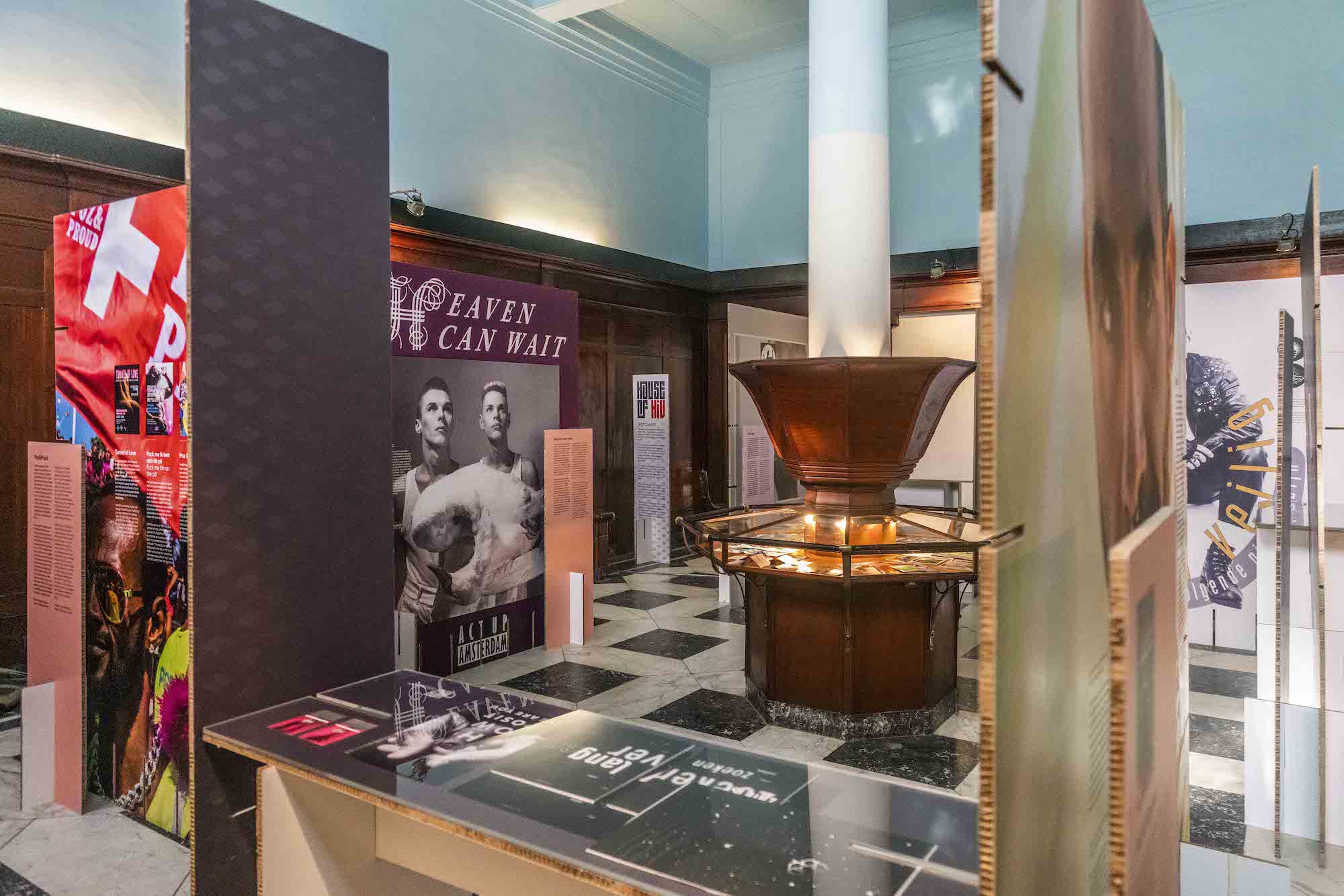
Hiv Vereniging rooms
The Dutch HIV Association represents the interests of people living with HIV in The Netherlands. They also provide objective information about living with HIV and organize peer support.
House of Hiv – House of HIV Vereniging
The association’s story begins in the mid-1980s, with the formation of the first advocacy groups for people with HIV and Aids in the Netherlands: the Alliance for People with Aids (BMA) and the Advocacy Group for Seropositives (BSP).
Through her work as an STI nurse at Amsterdam’s Public Health Service (GGD) in the early 1980s, Jeannette Kok had come to know many of the first people here with Aids, many of whom were gay men. Together with psychologist David Stein, she led the first discussion groups for gay men with Aids. That was where the idea for the BMA originated. Harry and Coenraad, who had come up with the plan for the alliance, wanted Jeannette to serve on its board: “We are going to die, you are alive!” Around the same time, Arjen Lindeman and some of his friends started the BSP.
The emergence of two separate interest groups had to do with the perceived difference between having HIV and being diagnosed with Aids. When it gradually became clear that both groups were fighting for the same thing, they decided to join forces, forming a single association. Hiv Vereniging Nederland officially came into being in 1990.
The Hiv Vereniging has two rooms in House of HIV. On the ground floor you will find the history room, with more stories from people who have contributed in different ways to the HIV community and the association in particular. On the first floor you can see a second room that was put together together with the HIV monitoring foundation and in which the diversity of the community is celebrated.
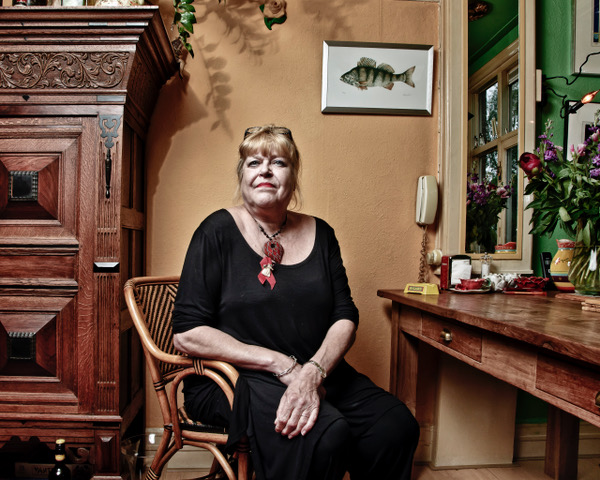
Photos of the history room:
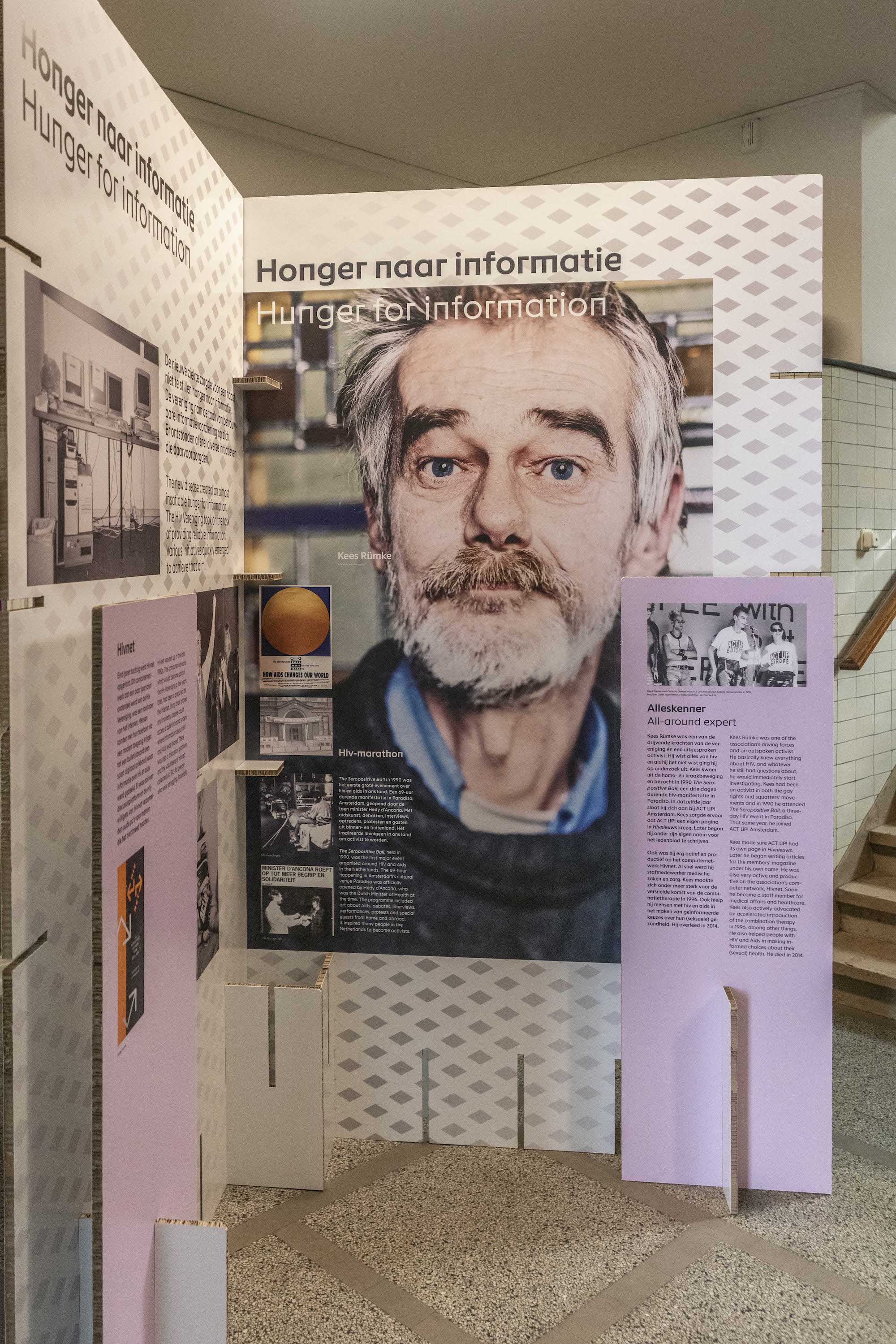
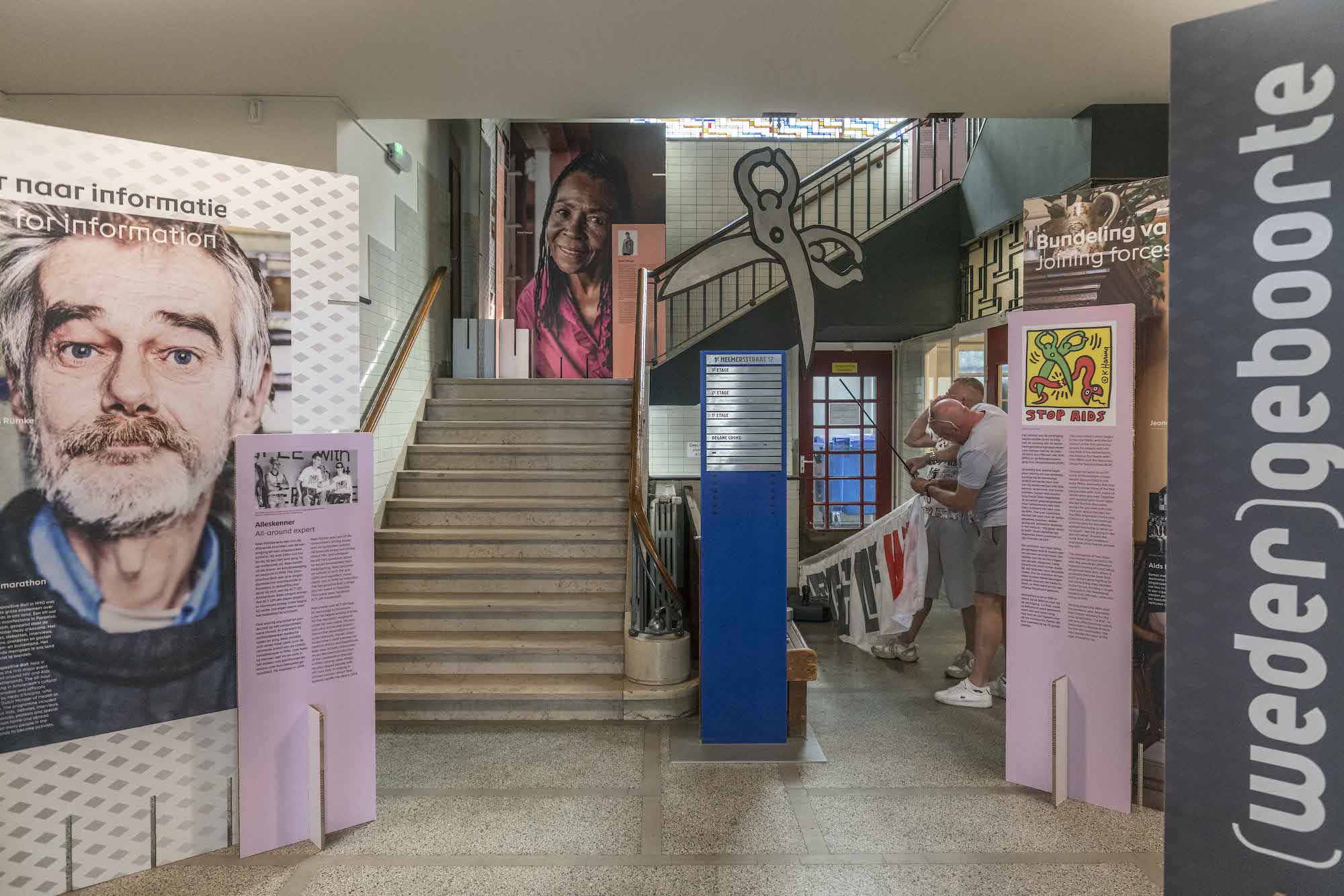
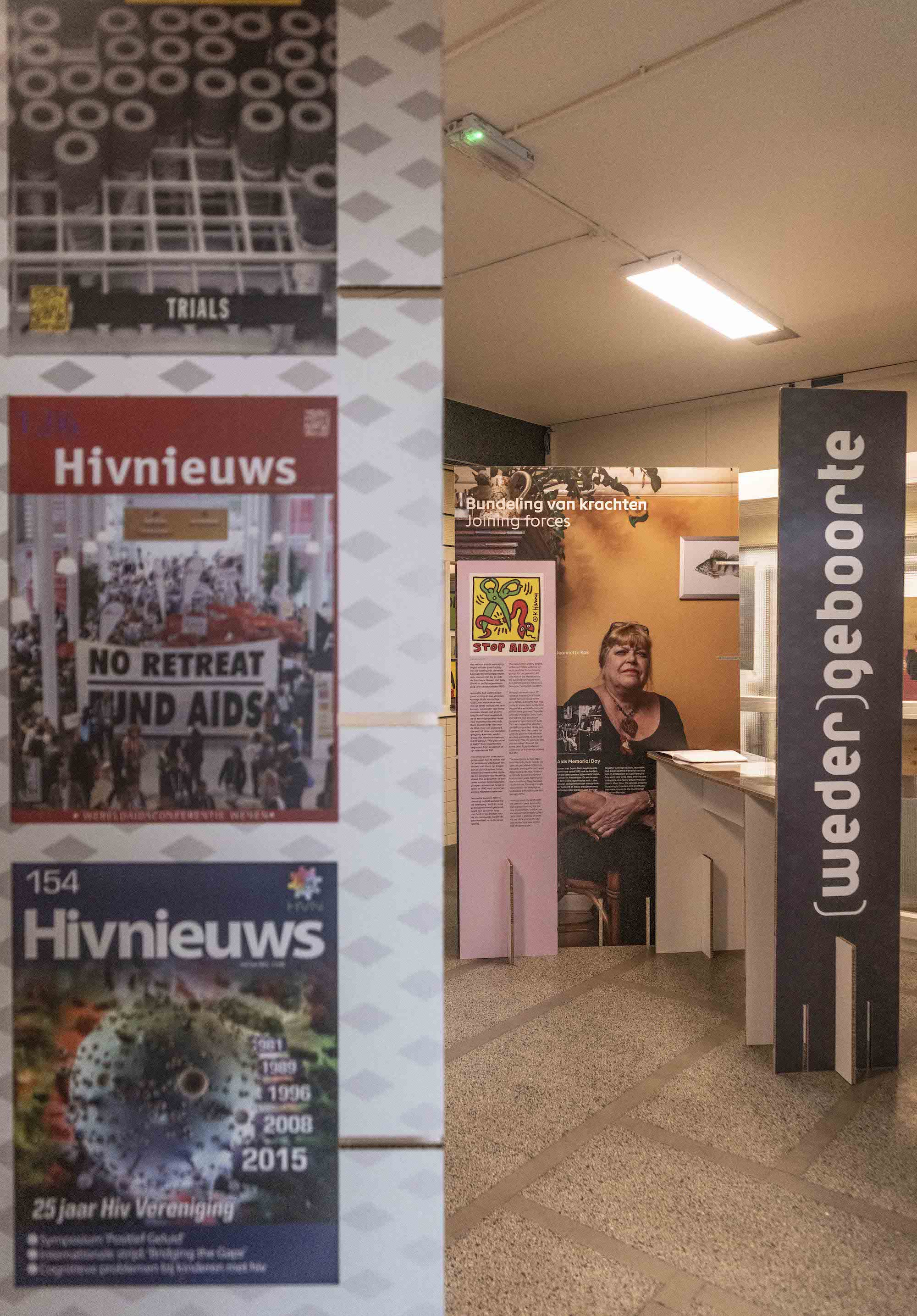
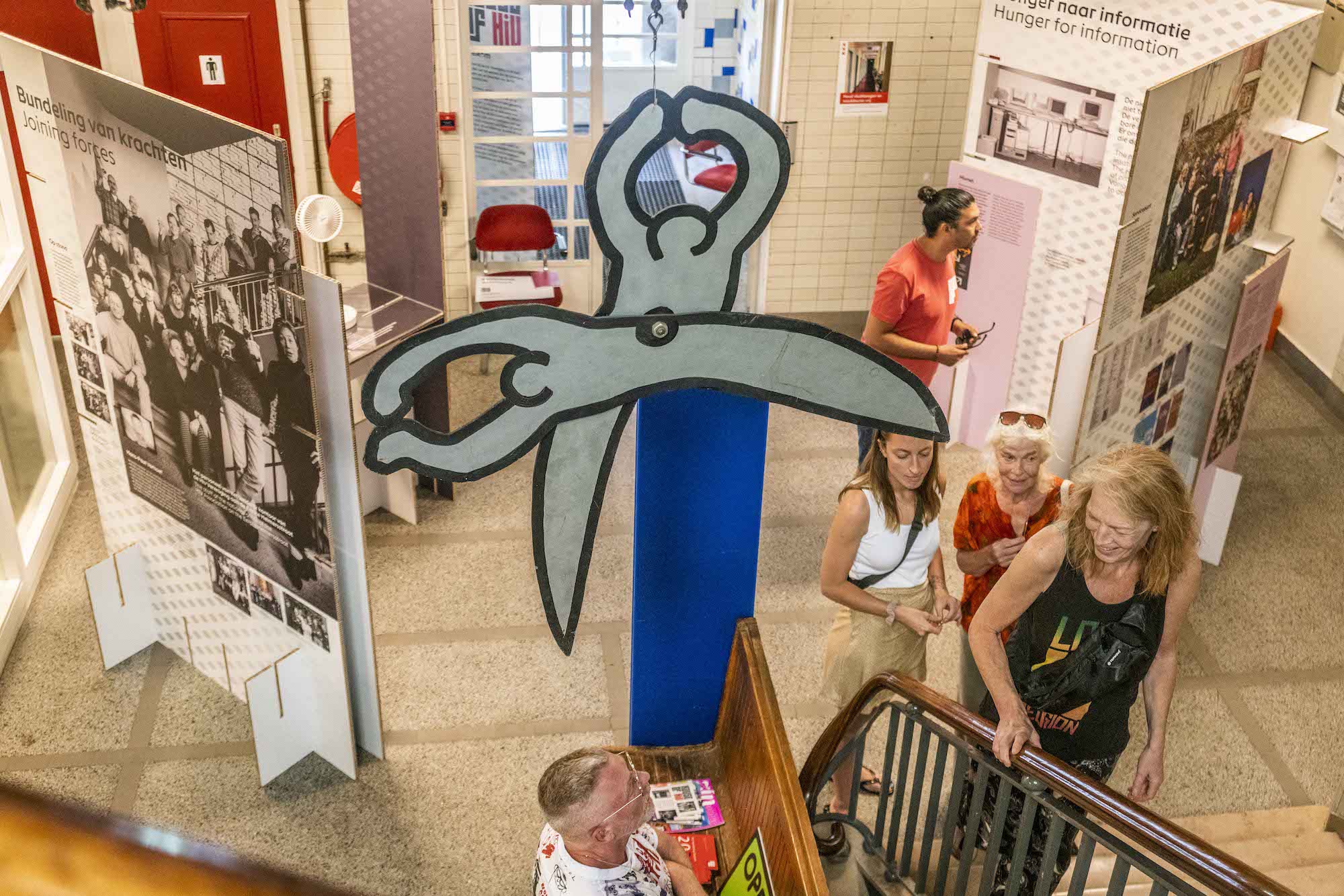
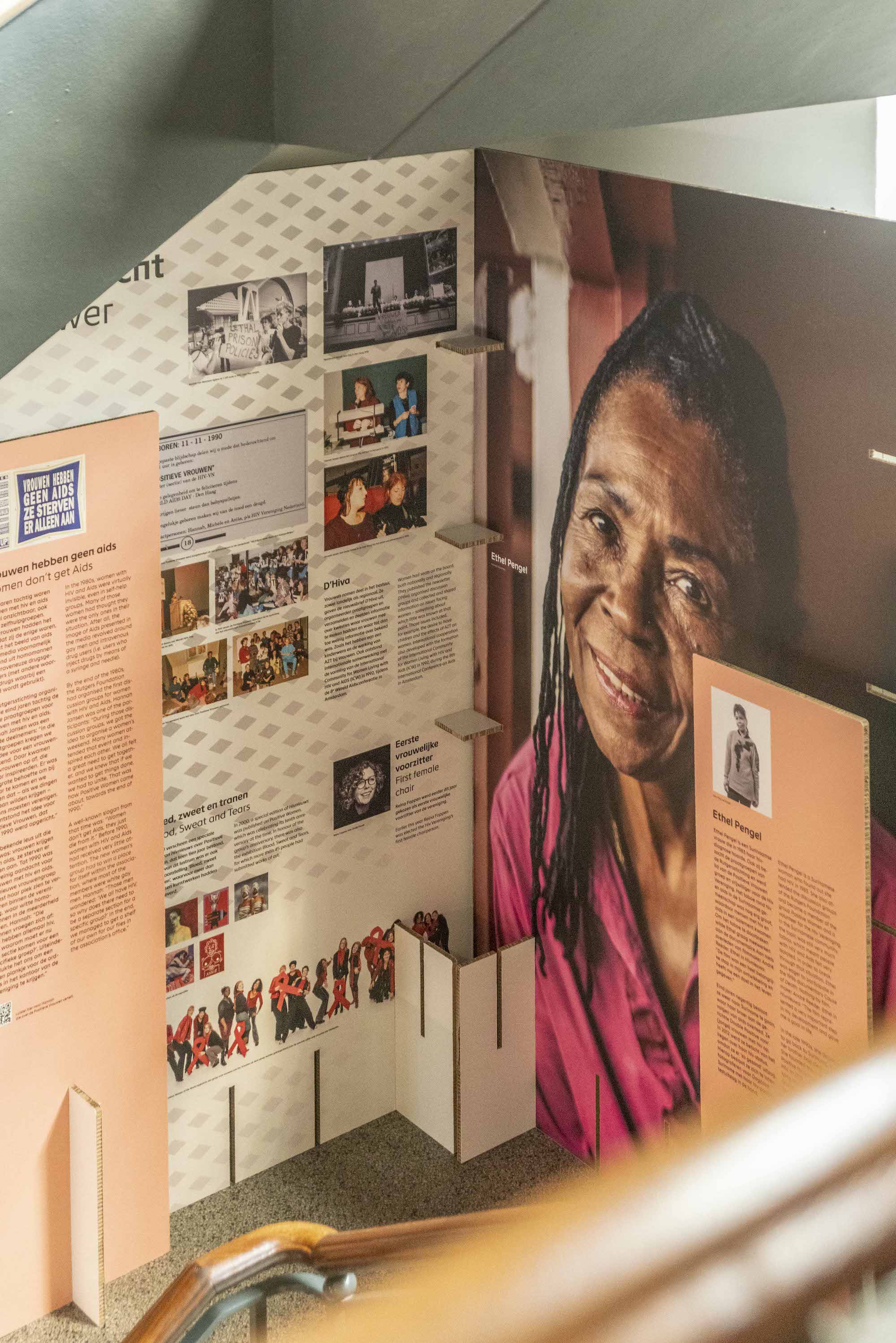

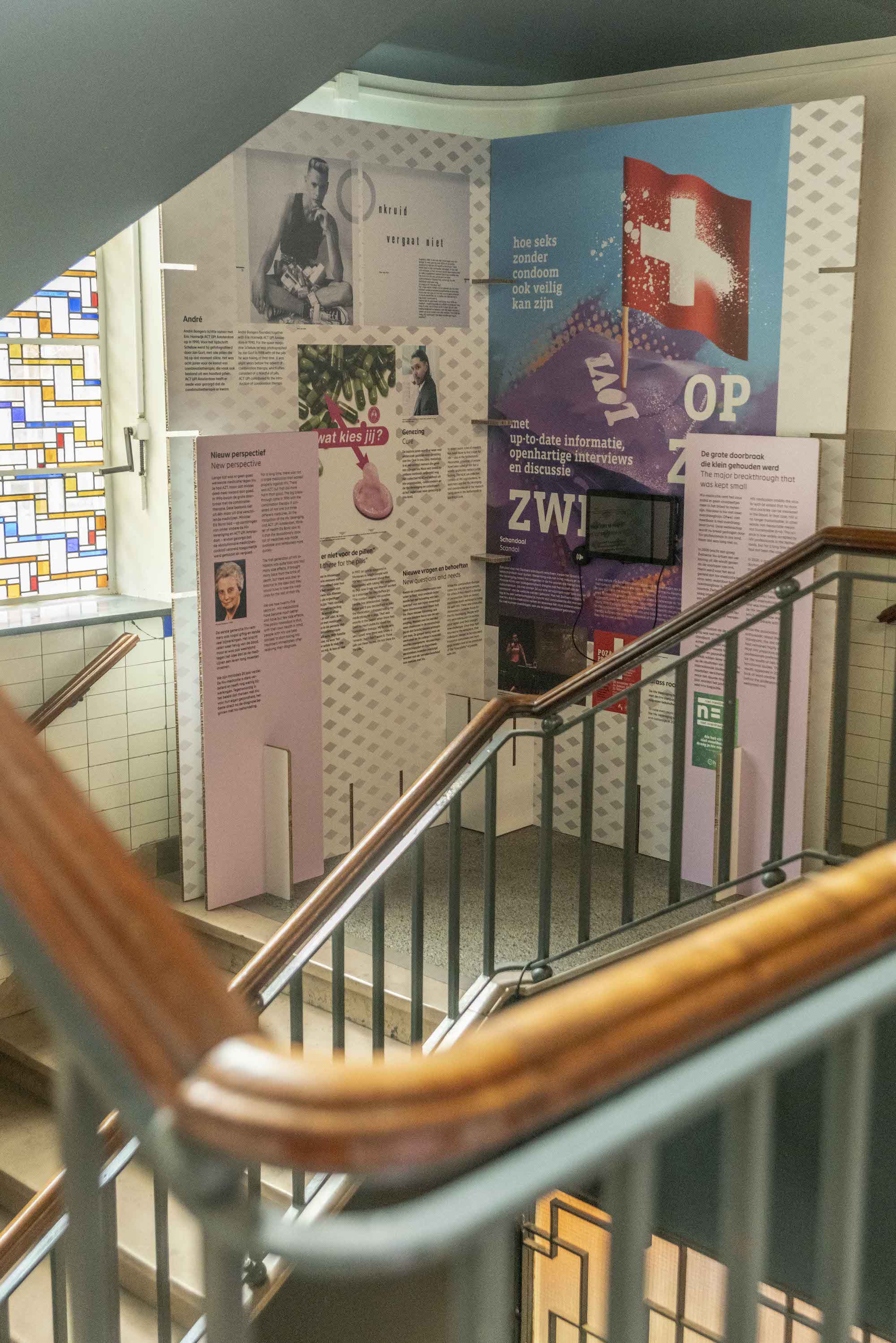
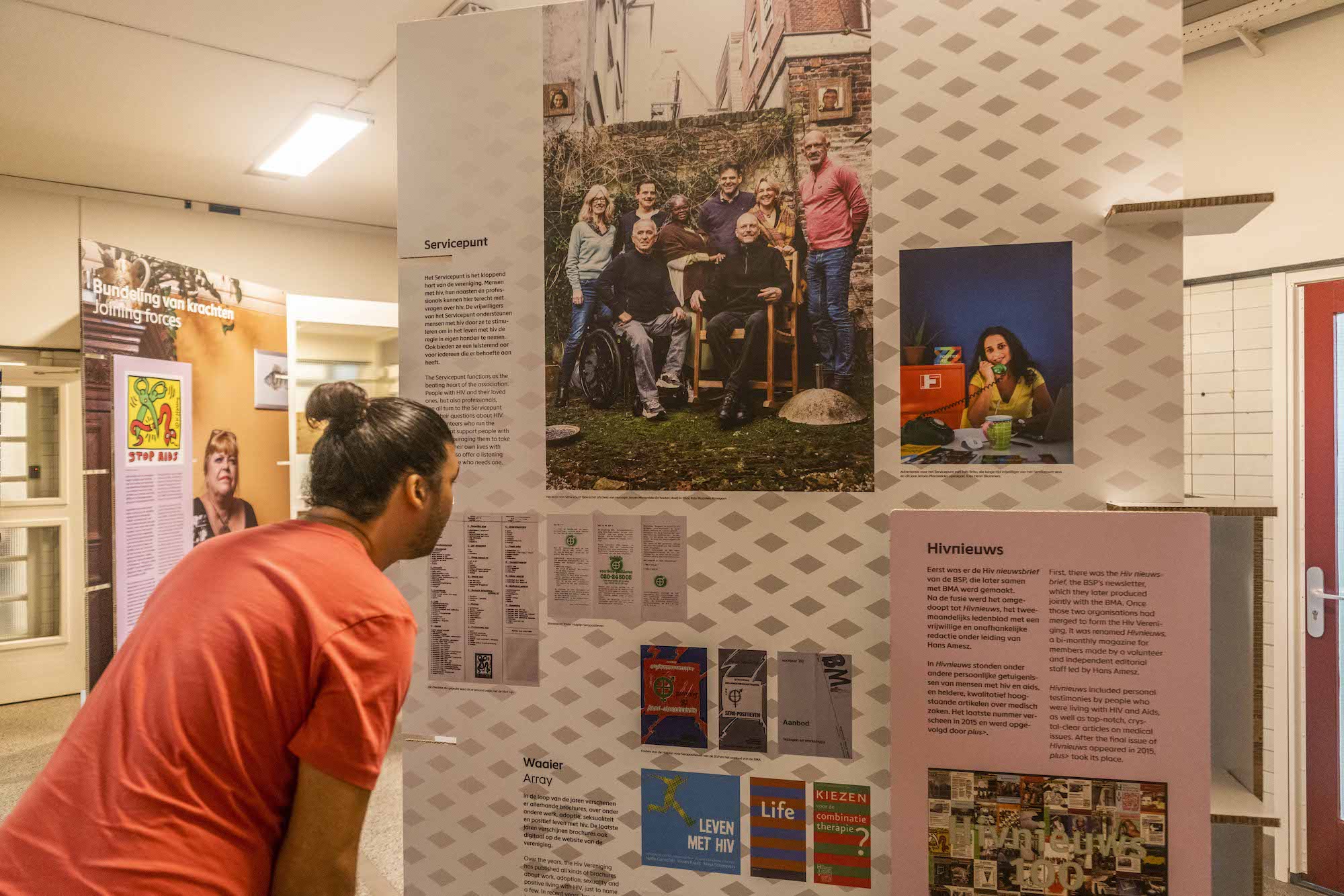
Photos of the Stichting hiv monitoring room:
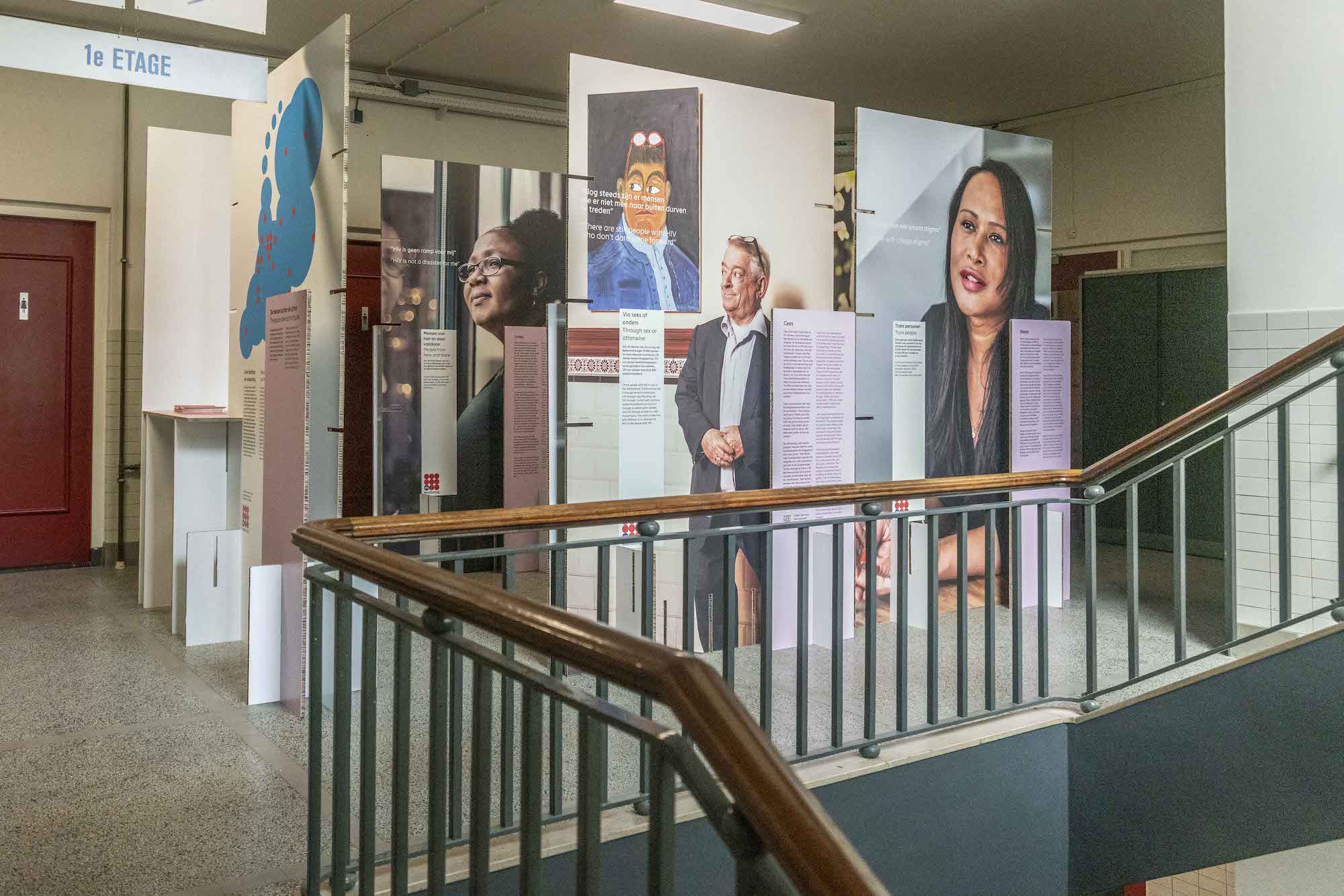
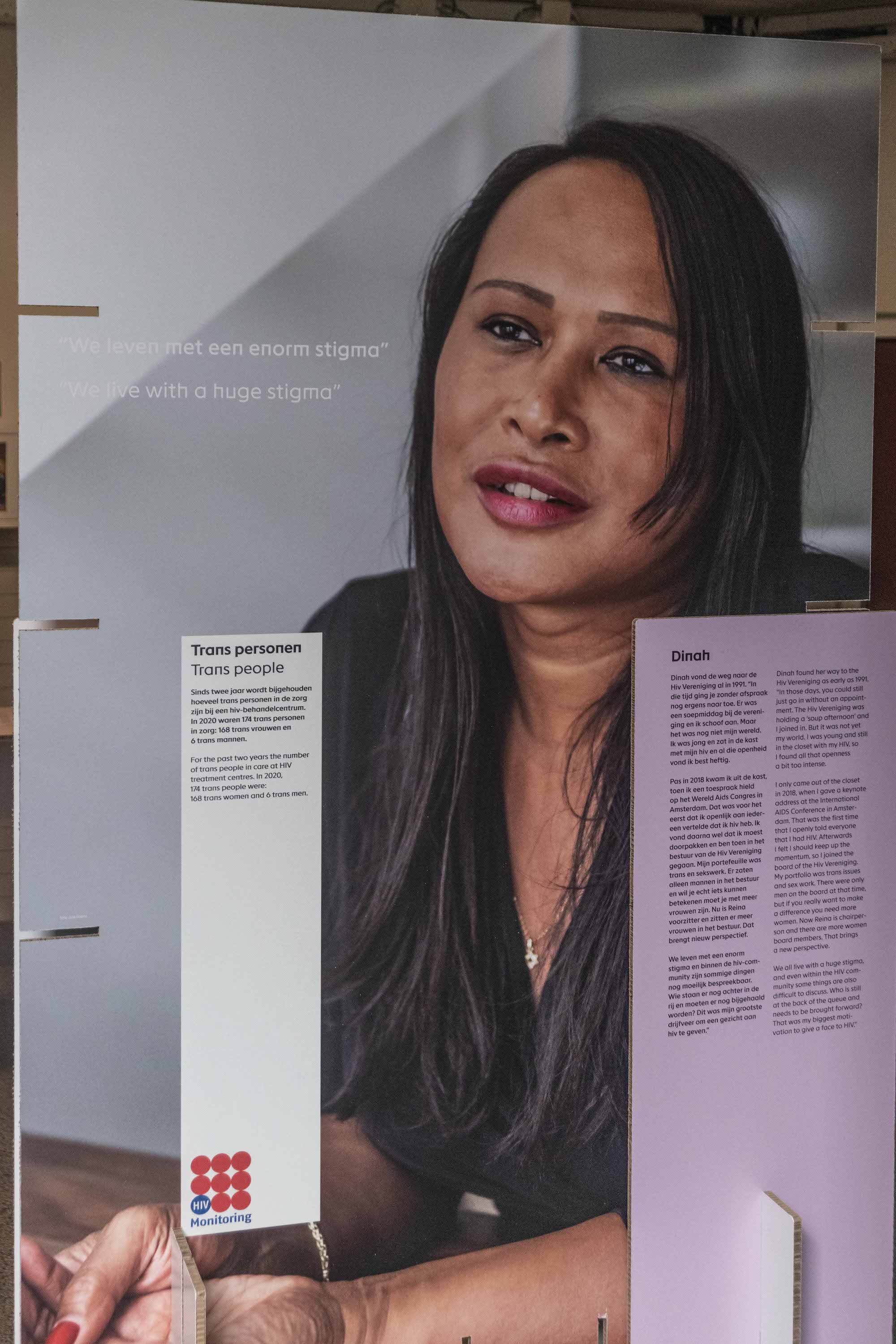
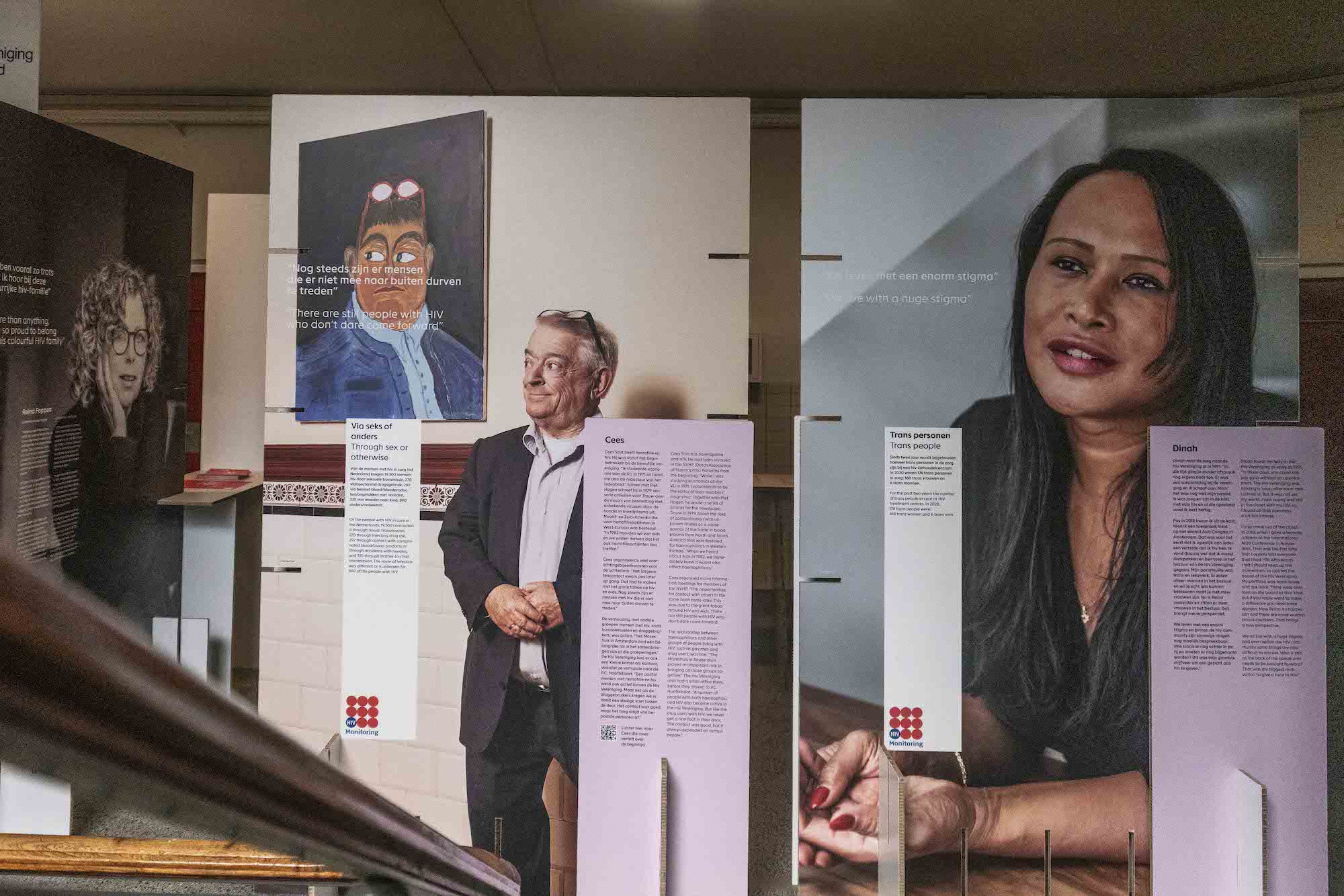
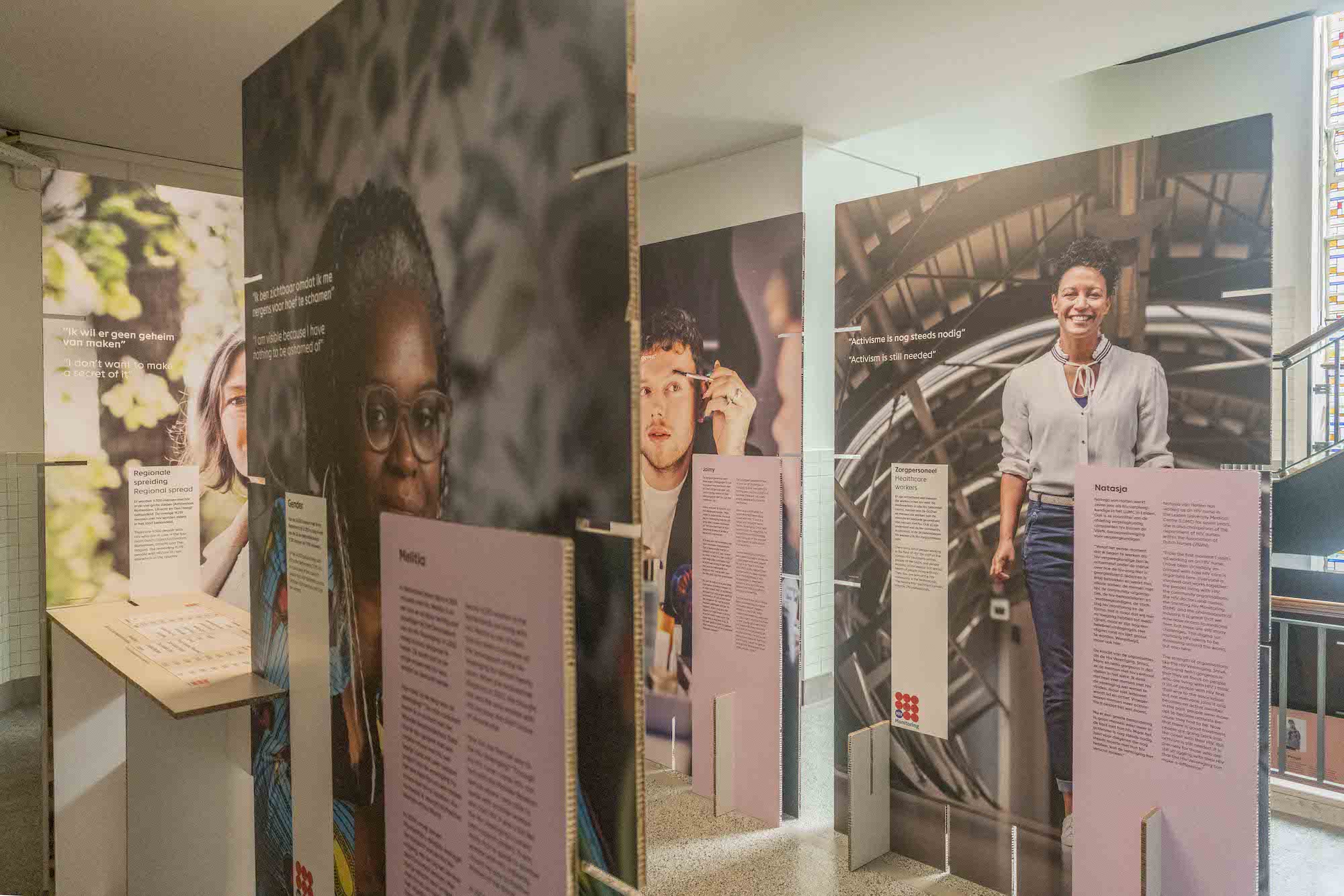
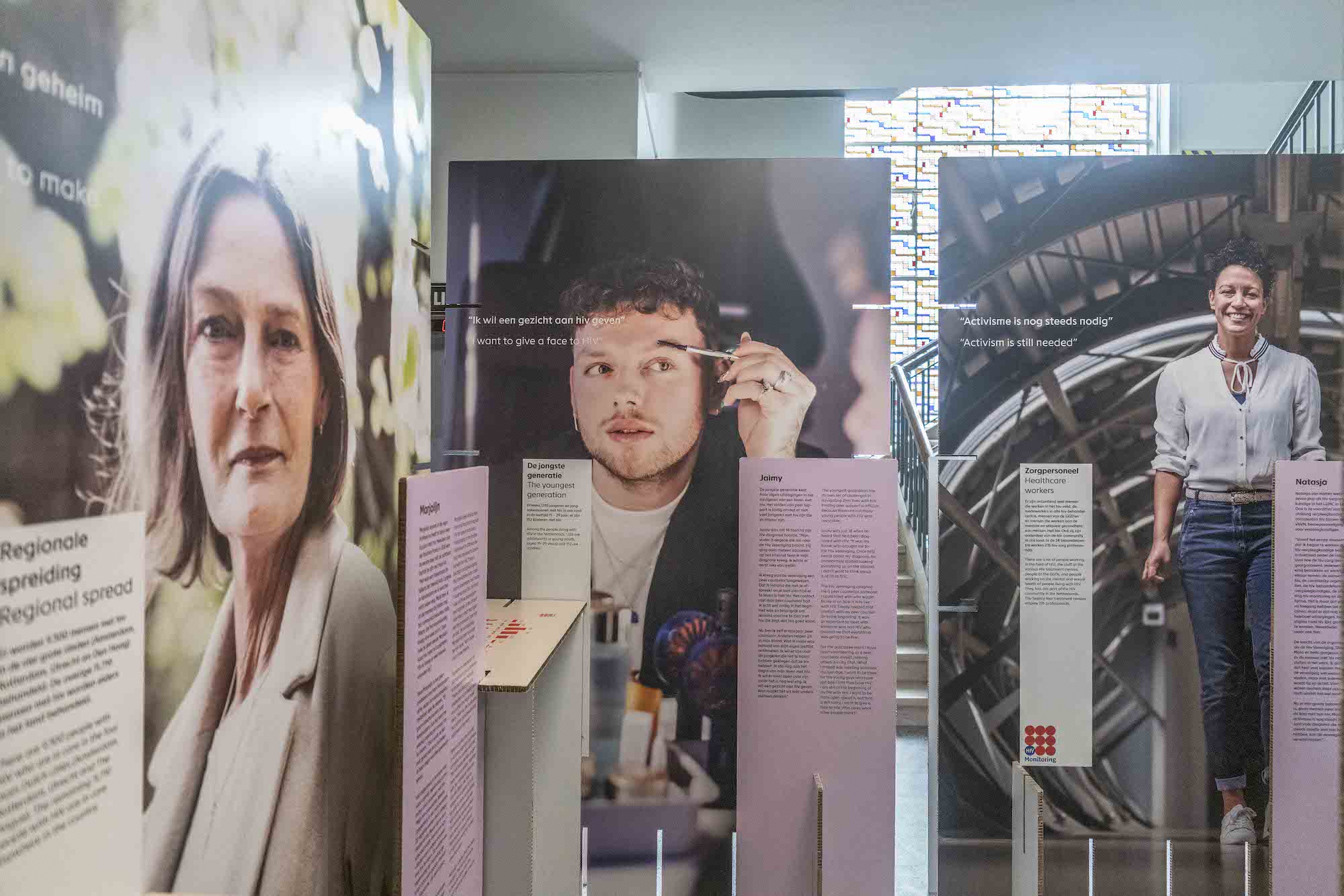
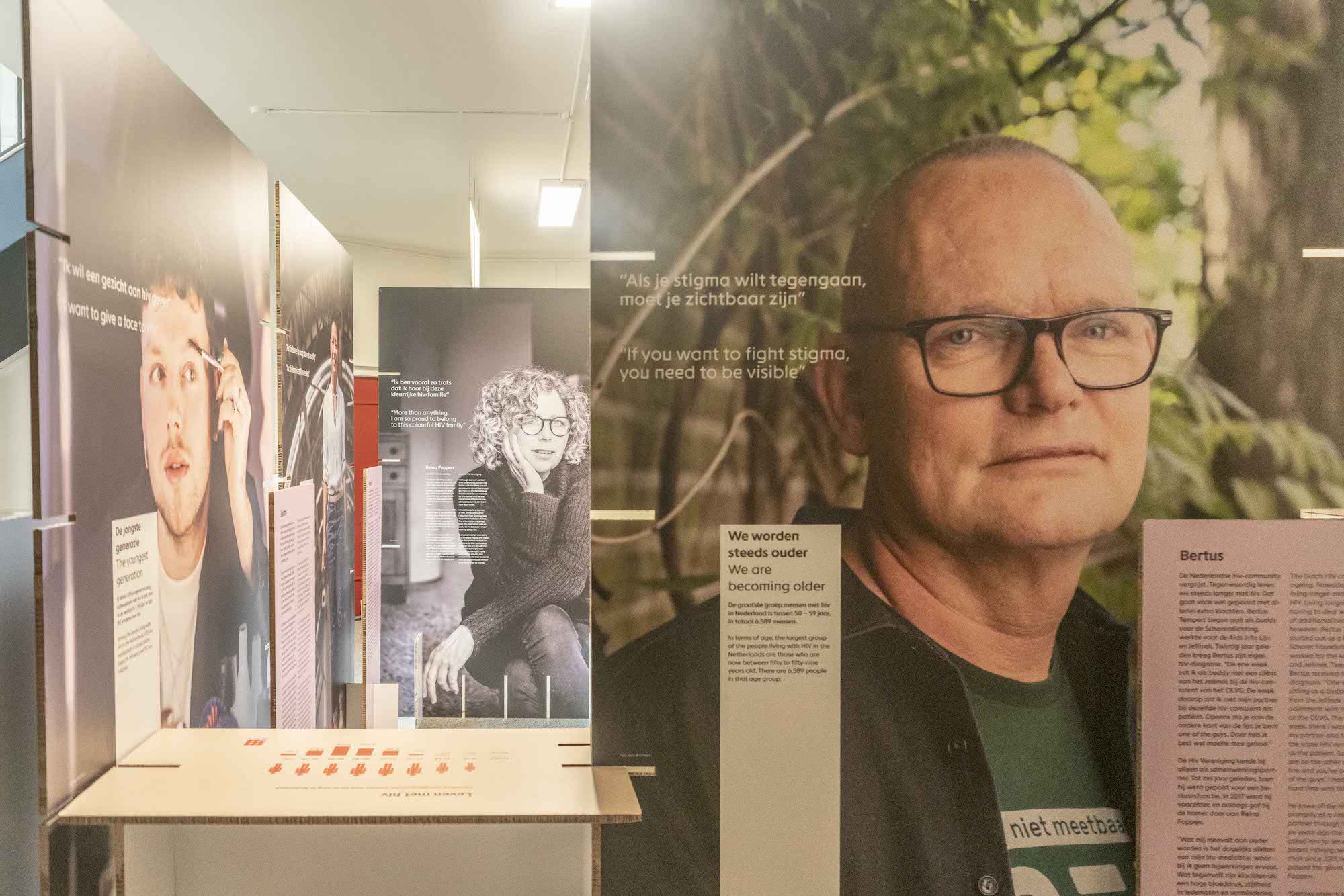
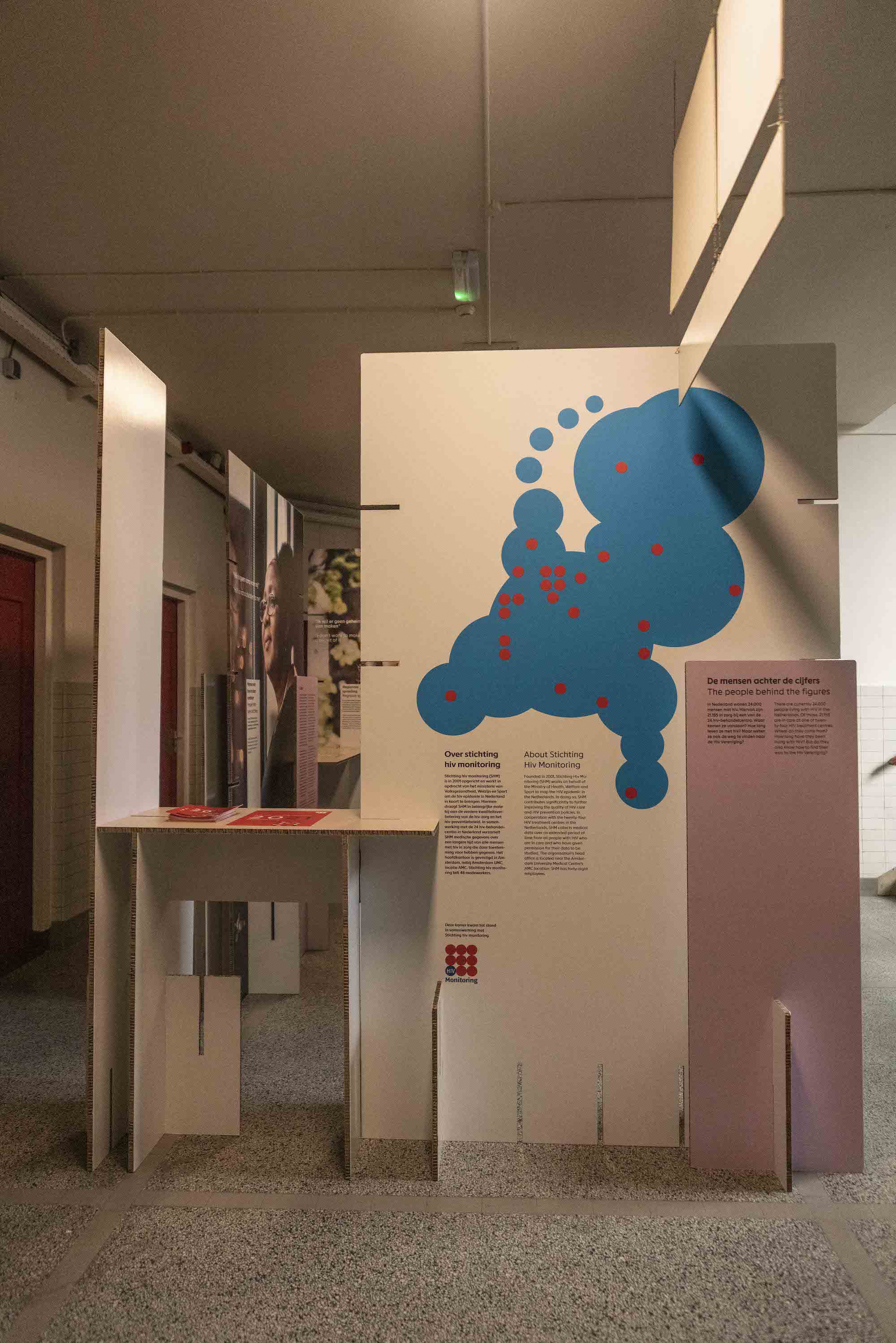
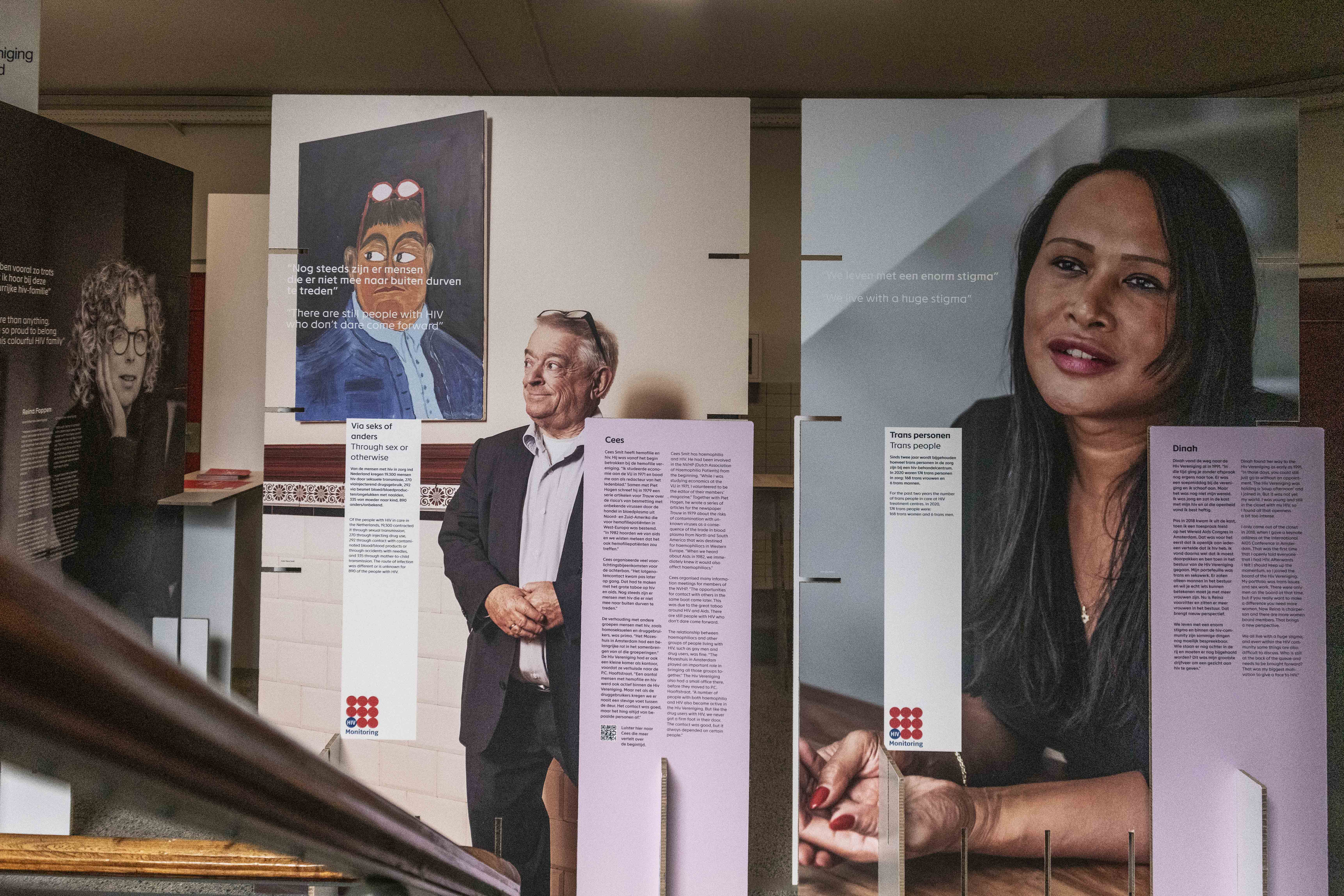
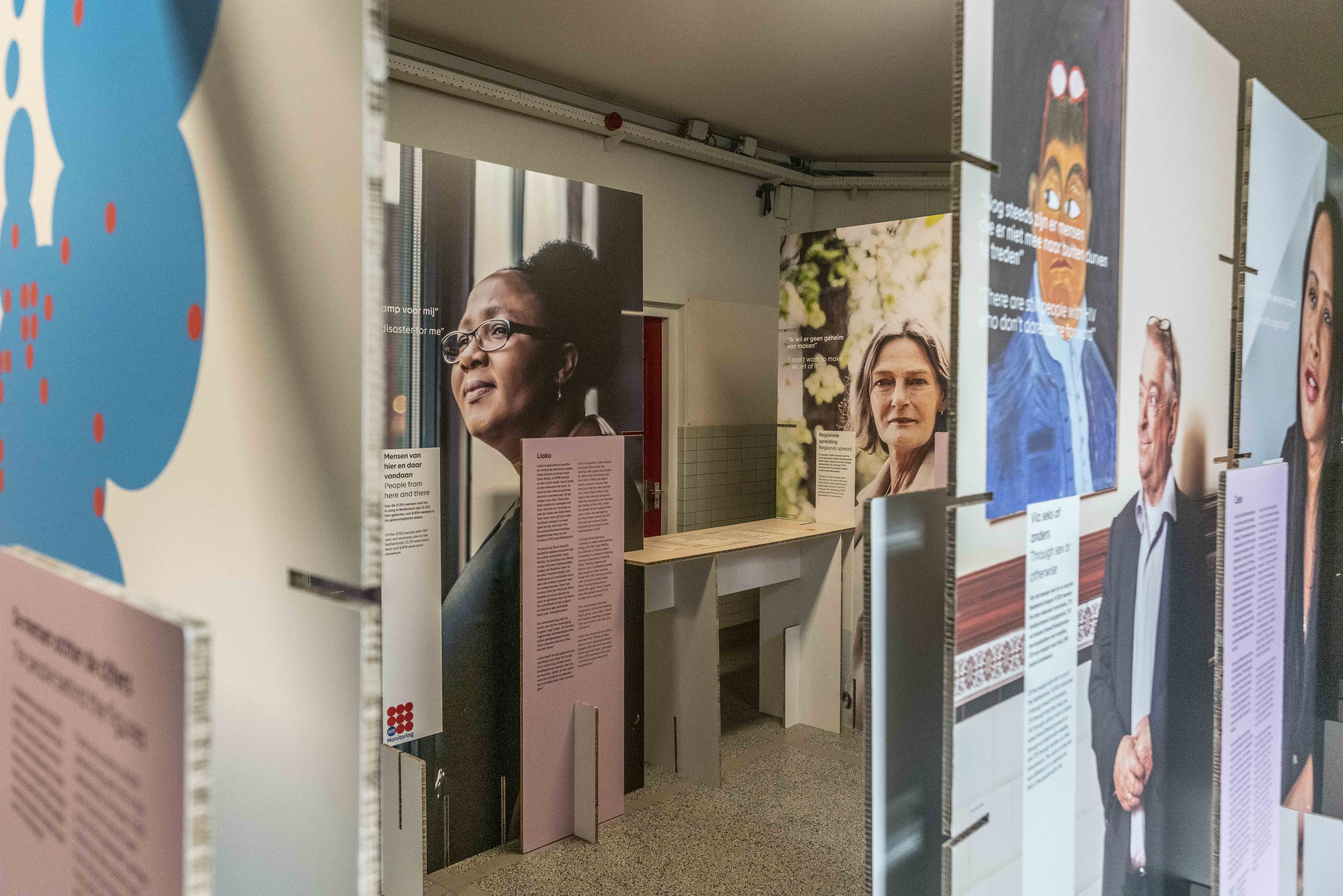
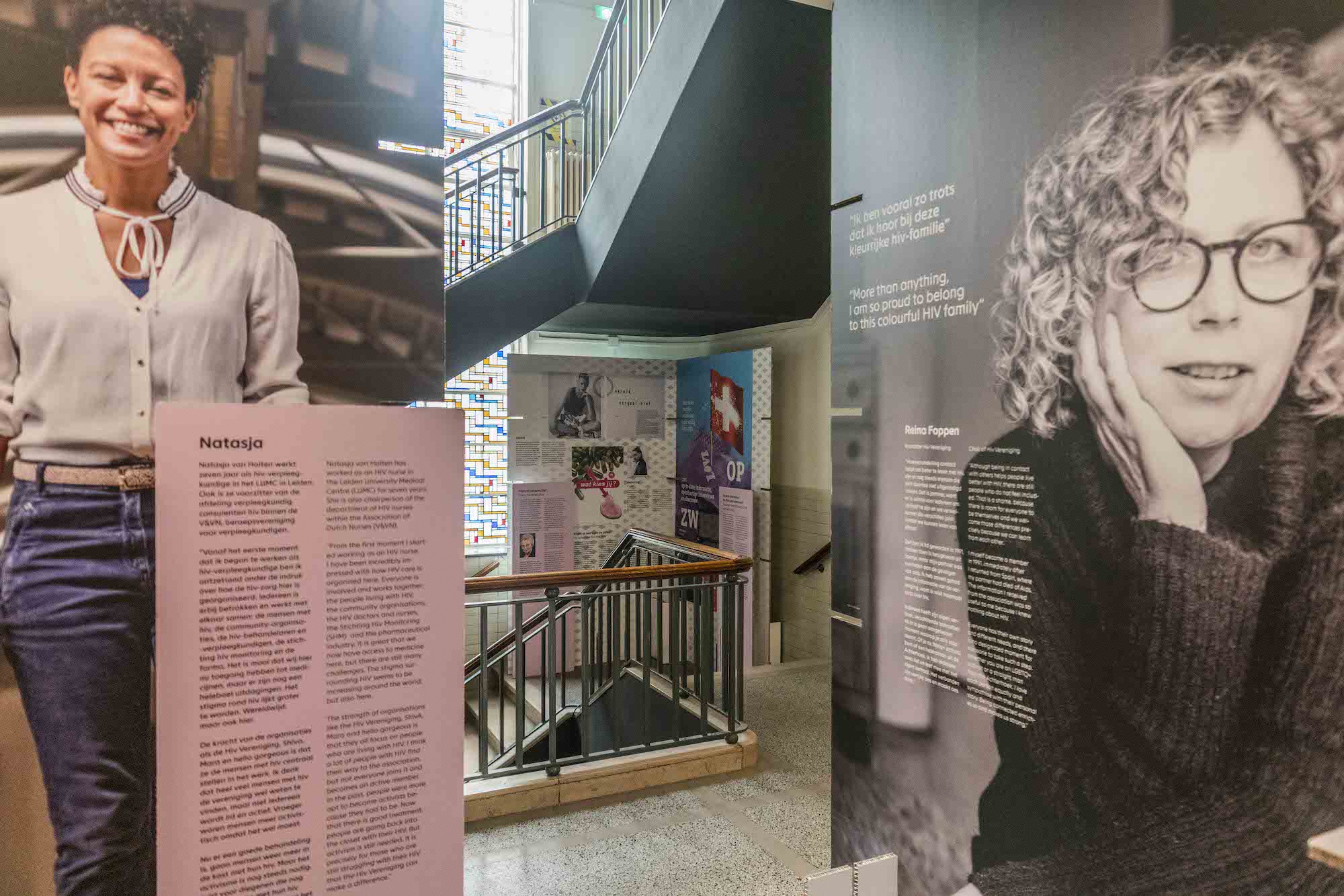

Hiv Vereniging
The Hiv Vereniging stands for unconditional equality of people living with HIV in the Netherlands, in every situation, at every moment. People living with HIV are central to everything the association does.


